








4 THE ROLE OF TELEMATICS IN SMART CITIES
13 AUTOMATION24 EXPANDS THEIR PORTFOLIO WITH THE ADDITION OF NORGREN
14 THE FUTURE OF MOBILITY EVS, HYDROGEN AND E-FUEL
22 IDS IS THE FIRST INDUSTRIAL CAMERA MANUFACTURER TO OFFER THE SONY SENSOR IMX662 IN BOTH COLOUR AND MONO
24 BAKER HUGHES TO SUPPORT STRATEGIC GAS PROJECT IN ALGERIA TO ENHANCE ITALY, EUROPE’S ENERGY SECURITY
25 PIONEERING SOES IN THE ENERGY SECTOR, PERTAMINA PARTNERS WITH THE JAPAN COOPERATION CENTER FOR PETROLEUM & SUSTAINABLE ENERGY
26 GENERATIVE AI: TOOLS, MODELS, & APPLICATIONS
34 AXALTA LAUNCHES INDUSTRY FIRST RANGE OF ISCC PLUS CERTIFIED BIOBASED POWDER COATINGS
36 THE FOUR BUILDING BLOCKS OF THE INDUSTRIAL METAVERSE
40 ABB INVESTS IN NDUSTRIAL TO ACCELERATE DECARBONIZATION THROUGH AI-POWERED ENERGY MANAGEMENT TECHNOLOGIES
42 KOMATSU EUROPE LAUNCHES NEW SORTING AND DEMOLITION GRAPPLE RANGE
43 HILSCHER INTRODUCES SENSOREDGE IO-LINK MASTERS INSTANT MONITORING OF SENSOR DATA
44 AGGREKO: ENERGY INTENSIVE INDUSTRIES ACROSS EUROPE URGED TO CONSIDER DECENTRALISED ENERGY SOLUTIONS AMID FRENCH GRID ISSUES
45 VOLKERRAIL LIFE EXTENSION WORKS CONTINUE ON SHEFFIELD SUPERTRAM
46 EAST ANGLIA THREE OFFSHORE CONVERTER STATION TAKES TO WATER FOR FIRST TIME
48 ROHDE & SCHWARZ PRESENTS ITS TEST SOLUTIONS AT CCW 2024 THAT ENABLE A SUCCESSFUL MIGRATION TO MISSION-CRITICAL BROADBAND
50 IGUS HONORS ENERGY CHAIN APPLICATIONS AS PART OF ITS NINTH VECTOR AWARDS

51 INNODISK UNVEILS GROUNDBREAKING MIPI OVER TYPE-C SOLUTION FOR ENHANCED AI VISION APPLICATIONS
52 LEUZE: NEW ULTRASONIC SENSORS
54 DATAFEED OPC SUITE FROM SOFTING INDUSTRIAL PROVIDES ACCESS TO SINUMERIC 840D CNC MACHINES
56 HARTING IS ON FIRE FOR THE SUBSTANCE OF THE FUTURE: ELECTRICAL ENERGY
57 NGK RECEIVES ORDER FOR NAS BATTERIES FOR LARGE-SCALE GREEN HYDROGEN PRODUCTION PROJECT
58 DELTA UNVEILS GROUNDBREAKING SOLUTIONS FOR SMART MANUFACTURING AND E-MOBILITY AT HANNOVER MESSE 2024
60 ADVANCING INDUSTRIAL COMPETITIVENESS THROUGH SOFTWARE, AUTOMATION, AND ELECTRIFICATION
62 DEVELOPING TAILORED INDUSTRIAL SOLUTIONS TOGETHER
64 NORD OFFERS OPTIMUM CONVEYOR FUNCTIONALITY WITH NORDAC ON/ON+ VFDS
66 COMAU’S DIGITAL TECHNOLOGIES TO IMPROVE BATTERY CELL PRODUCTION REACHING UP TO ZERO DEFECTS FOR THE BATTWIN PROJECT
68 COVAL LAUNCHES THE NEW GENERATION OF MULTI-STAGE MINI-VACUUM PUMPS: THE CMS M SERIES
70 SOUTHCO SECURING THE EV
73 HANNOVER MESSE 2024: SIEMENS ANNOUNCES A NEW GENERATION OF CONTROLLERS
74 EMERSON’S NEW MOTORIZED ACTUATOR AND SHUTOFF VALVE SOLUTION IMPROVES SAFETY AND RELIABILITY IN COMBUSTION SYSTEMS
75 DFI UNVEILS WORLD’S FIRST INDUSTRIAL MOTHERBOARD COMPATIBLE WITH INTEL CORE
76 AGGREKO UNVEIL MARKET-FIRST THREE-ENGINE GENERATOR WITH THE BRAND NEW POWERMX RANGE
78 ULMER SCHOKOLADEN AND CORETIGO ENHANCE CHOCOLATE MANUFACTURING WITH INDUSTRIAL WIRELESS AUTOMATION
80 VANZETTI ENGINEERING PRESENTS NEW RETRACTABLE SUBMERGED PUMPS
81 KOLLMORGEN EXPANDS AKD2G VERSATILITY WITH THE LAUNCH OF NEW SYNCHRONIZED COMMUNICATION PROTOCOLS
Send your press releases to: editor@ipmediaonline.com
To receive ours newsletters, please subscribe online: https://induportals-media-publishing.com/
INDUSTRY is the magazine for engineers, published by InDuPORTALS MeDIA PuBLISHInG. It contains the latest product and company news for industrial markets. INDUSTRY edits its articles with the greatest of care, however we cannot guarantee the accuracy of the information presented in them. Our teams disclaim all responsibility concerning the content of this media or how it might be used.
Milton D’Silva explores how telematics is helping in shaping the smart cities ecosystem.
Telematics is a portmanteau term formed by combining the words telecommunications and informatics. Originally used in French – télématique – it was coined by authors Simon nora and Alain Minc in a 1978 report that originally foresaw the use of telecommunications to exchange information with the science of computer processing. In simple terms, telematics is the process of transmitting information remotely over long distances, now over the internet. This is done in order to monitor, track and control various movements and activities, in conjunction with the use of sensors, GPS technology and other electronics to collect and transmit data. Today it is associated almost exclusively with vehicles and mobile machinery, though there are other applications as well. The exchange of information is central to the applications, the information gathered from multiple sources and devices and computed into useful bytes for specific applications. So widespread is the use of telematics today that it is just taken for granted with no thought to the technologies that go into it.
Like most other sensitive technologies, the use of telematics, even before the term was coined, had begun with the uS Defence Department that had developed the global positioning system (GPS), a network of satellites and receiving devices used to determine the location of combat vehicles and equipment in the field. Again as it often happens, it did not take long for the technology to become declassified and widely adopted for general applications, especially with the internet becoming available to the common man. By the early 1990s, GPS was made available for civilian use and the progressive growth in wireless communication technologies that enabled cellular networks made real-time data from vehicles available to central systems. This in turn resulted in the development of telematics systems for vehicle tracking, navigation, and emergency assistance. The earliest example of the effective use of telematics in the automotive field was when the government in South Africa used the technology to curb the widespread phenomenon of carjacking by remotely disabling the engine. However, the real boost to telematics was provided by the combination of mobile telephones and internet services with every successive generation of connectivity adding to the performance and efficiency.

Telematics – Not Just Automotive even as telematics is widely associated with automotive applications, it has also been adapted for various other sectors, especially in logistics, healthcare and agriculture. The following sectors make extensive use of telematics even as some relate invariably to the automotive part of these sectoral services:
• Fleet Management Services: For operators of large fleets of trucks, buses and delivery vehicles, telematics are of great help in planning and execution of schedules, selecting the optimum routes and monitoring driver conduct, which results in improving overall efficiency.
• Insurance: Insurance companies have been quick to use telematics to offer special incentives in the form of

customised insurance packages based on individual driver behaviour and vehicle data by assessing risk behaviour.
• Healthcare: Perhaps the best use case of telematics, in healthcare, it is used for remote patient monitoring and telemedicine. With wearable devices and sensors facilitating real-time monitoring and timely interventions, it is possible to treat patients remotely.
• Construction Equipment Monitoring: This is actually an extension of telematics in automotive applications but with a wider scope of tracking equipment usage, maintenance schedules and monitoring of idle time of the machinery. The result is optimum operations, reduced downtime and improved efficiency.
• Agriculture : With the increased mechanisation of agriculture telematics is the right tool for monitoring farm equipment, maintenance and usage, much like construction equipment. Optimising water use in irrigation is an added advantage.
• Utilities: This is an area which touches every citizen and the use of telematics by utilities – water, gas and electricity – goes a long way in billing, maintenance services and tracking and predicting failures.
• Logistics and Supply Chain: The memories of Covid and the disruption of supply chains is all too fresh in most minds even if a few have forgotten. Real-time tracking of shipments, locating lost consignments, and identifying
bottlenecks – telematics can play a critical role in the efficient movement of goods.
• Public Transportation: Those using public transportation can vouch for the efficacy of telematics in improving user experience in terms of schedules, arrival and departure times and much else, giving a seamless experience.
• Energy Management: If utilities take care of the consumer end, for energy companies, the added advantage of telematics is in monitoring of power generation or gas production and distribution, eliminating system inefficiencies, minimising distribution losses by plugging leaks, etc.
• Asset Tracking: For enterprises, logistics and supply chain is only part of the story. Tracking of assets – plant and machinery, static and mobile equipment is equally important and impacts the performance and profitability, with telematics binding operations together.
• Mining: This is a vast area literally and metaphorically, with assets spread across huge terrain that is often inaccessible. The use of telematics connects assets, monitors equipment and also tracks the movement of man and material, with real-time information always available.
• Telemetry in Sports: everyone today is aware of the extremely high competition in sports with split-second winning margins and consequent heartbreaks for those who fail to make the cut. Wearable sensors, health monitors, etc., facilitate the smooth and safe conduct of sporting events thanks to telematics.
The above examples make it obvious how telematics play a distinct role in various industry segments by making effective use of data for decision-making, which in turn leads to increased efficiency, safety and performance. Little surprise then, that telematics fits like a glove on the emerging smart cities ecosystem globally. Modern smart cities are driven by technology and telematics is right at the centre of this revolution, but more of that, later. At the moment, it would be of interest to understand the origins of the smart city concept.
The term smart city was coined by IBM in 2014, but the concept originated in the late 1960s in the uS when the citiesbased organisation Community Analysis Bureau began using computerised databases of citizens to serve them better. This was done to study the demographics, housing conditions and civic services in different cities and localities, in order to improve the quality of life in general, and provide emergency services and initiate relief measures in case of civic strife or natural calamities. Gradually, the concept evolved in tandem with increasing trends in urbanisation as cities attracted more and more people and there was a growing need for more efficient and sustainable urban development. Today, smart cities represent a paradigm shift in urban living, aided in no small measure by various digital technologies, data analytics, and connectivity solutions to address the many challenges that defy solutions by human intervention alone.
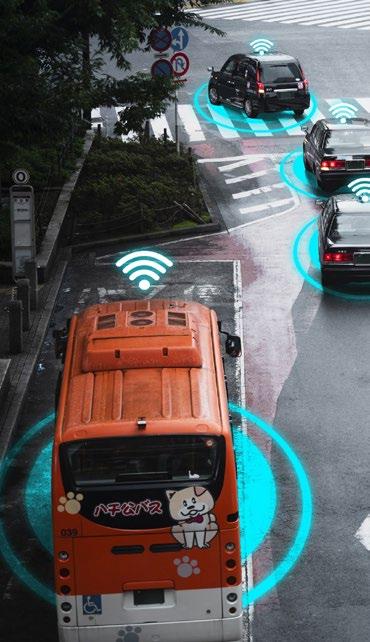
One of the key aspects of smart cities is the optimised use of available resources. In general, the traditional city administration with dated methods and distribution channels is largely ineffective due to the many deficiencies that have crept into the system. To optimise anything, the beginning has to be made by measuring all the parameters such as power quality and state of transmission and distribution networks, state of water pipelines, quality and accuracy of metering, etc. Once this is done with the help of advanced sensors and monitoring systems, the cities can manage energy and water supply more efficiently, plugging the leakages. For example, smart grids not only ensure better management of electricity distribution, it also minimises waste if not eliminating it altogether. The same is true of water supply, where proper monitoring and detection of inadequate pressure and leakages prevent unnecessary loss of a precious resource. Such optimisation not only conserves resources but also reduces the environmental footprint of cities, contributing to sustainability efforts. In the process, it also helps consumers by reducing the cost of utilities.
Another important aspect of modern cities is transportation – the road networks, metro infrastructure and various mobility options between private vehicles and public services. Traffic congestion and the resultant pollution are obvious bottlenecks made worse by inadequate public transportation services. Smart cities need smart

transportation solutions and many have evolved over the years. Gowing electrification of mobility – the metro services and tram carriages run on electricity as do an increasing number of private vehicles. Authorities today resort to intelligent traffic management with real-time information from the vehicles on the road to ease traffic congestion by keeping all drivers on a particular stretch informed about alternate routes, or caution them about delays. Another measure is encouraging carpooling, which is also aimed at reducing the number of vehicles on the road.
next in importance on the smart cities agenda is public safety and security, which is achieved by extensive electronic surveillance systems. extending far beyond the scope of traditional CCTV cameras, the smart city surveillance network encompasses smart lighting, advanced sensors, IoT devices, facial recognition systems, AI-powered analytics and predictive algorithms that form a seamless system of surveillance, enabling real-time data on traffic conditions, public places and environmental conditions, etc. This facilitates quick response in emergency situations. Besides contributing to safety measures, smart lighting also helps conserve energy by adjusting brightness levels to needbased requirements.
Perhaps the most significant part of the smart cities initiative is citizen engagement and the digitalisation of
administrative services in civic bodies. With systematic metering and billing of utilities, there is transparency and accountability. Online services with user-friendly interfaces on mobile devices empower citizens to access information without visiting any office and in general participate in decision-making by providing feedback to the municipal authorities. Such initiatives also inculcate a stronger sense of community participation and responsibility, taking ownership of the civic affairs in a way, contributes to the overall development of the city.
Finally, smart cities also encourage innovation and economic growth by wider community participation in civic activities. An empowered citizen also becomes a responsible, environmentally conscious citizen conserving resources and avoiding excesses.
With the proven efficacy of modern telematics – the amalgamation of advanced communication and information technologies – the technology plays a crucial role shaping smart cities that are enhancing various aspects of urban life. Following are the main areas where telematics provide the basic blueprint for the development of smart cities:
Traffic Management: Modern cities are thriving places of people engaged in business and commerce, and for that very reason travelling within the city for a myriad of reasons besides the basic need for commuting to respective places of work. While every city has a basic public transport system in place, a large number of people travel by own vehicles and growing urbanisation means traffic often becomes unmanageable. The smart city solution is twofold:
• Real-time Traffic Monitoring: Real-time data collection with the help of telematics of the number of vehicles on the road, the traffic hotspots causing congestion, providing information on alternate roads, etc., for optimised traffic flow.
• Predictive Analysis: With real-time analysis of current data and comparison with historical data for specific routes, smart cities are in a better position to predict traffic patterns and initiate measures to decongest the bottlenecks, easing the flow of vehicles.
Public Transportation : A long-established system of transport in urban areas for mass movement of people, public transportation is even more important in the smart city scheme of things to improve the quality of life. This is achieved by:
• Real-time Tracking: By providing accurate information on movements of metro trains and municipal buses, telematics allows for real-time tracking of public transportation, helping commuters plan their journeys more efficiently.
• Route Optimisation: Smart cities use data made available by telematics to rationalise public transportation routes, improve frequency of trips during peak hours and reduce overall travel times.
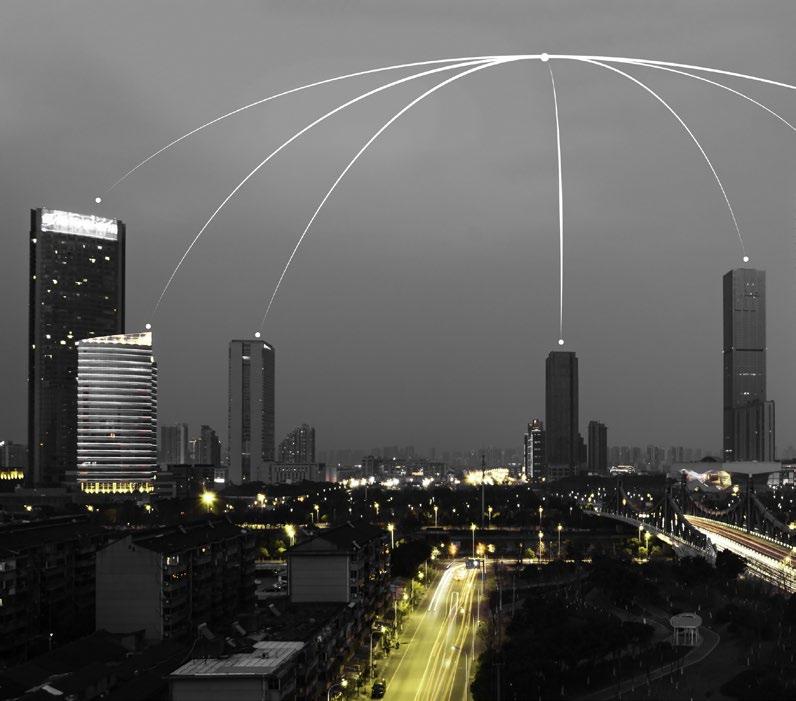
Parking Solutions: Vehicle owners driving around cities know how severe the space crunch for parking is with the limited slots already occupied. While dedicated mechanised parking facilities have sprung up in response, telematics help them connect with the motorists.
• Smart Parking: Smart parking systems that guide drivers with the help of telematics to the nearest available parking slots, avoiding traffic congestion and the resulting emissions from idling vehicles.
• Payment Integration: A seamless, integrated payment interface with mobile apps facilitates convenient and cashless parking payment solutions.
Emergency Services: Accidents, criminal activities, medical emergencies are routine happenings in city life. Instant action and remedial measures in what is described as ’the golden hour’ in medical parlance can save lives. This is exactly what telematics can provide in smart cities – a quick response that activates emergency services by providing real-time information about such incidents.
Environmental Monitoring: Air pollution in cities – mainly vehicular, industrial, construction and garbage disposal – is a serious health hazard. Besides air pollution, cities also suffer from noise pollution. Measuring pollution levels is the first step for initiating remedial actions:
• Air Quality Monitoring: While data of vehicular pollution and that of construction machinery is captured at source, sensors monitor pollution from other sources via telematics to help monitor and analyse air quality data, the results of which determine the course of action against pollution in order to improve environmental conditions.
• Noise Level Monitoring: Mainly a result of construction and building activity, here too sensors connected through telematics monitor noise levels, which in turn helps restrict the offending machinery from operating at all hours.
Infrastructure Upkeep: City infrastructure needs periodic maintenance, especially the state of the roads and bridges, for signs of unusual wear and tear and damage. For example, a study done by the Michigan Technological university in cooperation with the Center for Automotive Research and

the Michigan Department of Transportation, made use of remote sensing technologies to assess and monitor the condition of bridge infrastructure and improve the efficiency of inspection, repair, and rehabilitation efforts.
Smart Grids & Water Supply: Another important aspect of smart cities is energy and water supply and distribution, utilities that service the citizens. Telematics helps monitor and manage water and energy consumption, contributing to the development of smart grids that enhance energy efficiency in cities and supply metered water with appropriate conservation measures.
Waste Management : Mountains of trash is a serious side effect of modern lifestyles where everything comes packaged, mostly in plastic and other non-biodegradable materials, a serious problem for smart cities.
• Efficient Collection: Planning is the key to optimise waste collection by rationalising the routes to reduce vehicle use and fuel consumption in order to reduce the carbon footprint while raising the efficiency of waste management operations.
• Monitoring Fill Levels: Sensors are used to monitor the fill levels of waste containers, optimising collection schedules.
Public Safety: The importance of safety can never be overemphasized and the law enforcement agencies are always on the job. Technology plays an important role in this as public places are equipped with smart surveillance systems that continuously monitor streets and other public spaces for unusual activities. The footage is analysed by AI-based tools to detect unusual activities that trigger immediate response. Telematics plays an important role in bringing together all the areas under a common platform, facilitating quick decision-making that helps city administrators.
Traditionally associated with automotive applications, telematics, as seen in the preceding paragraphs, has applications beyond automotive in many other areas. While the primary focus of telematics remains the automotive sector which is witnessing rapid advances in the connected vehicles era, smart cities are emerging as a major user of telematics. This is obvious when comparing the growth of telematics exclusively in the automotive field versus the overall growth of telematics including other industry segments. A word of caution though – when it comes to market reports rarely do two agencies agree on the estimated numbers and at times the differences in figures are too far and wide raising doubts about the datasets used.
For example, according to a recent report by Market Research Future, the telematics market industry is projected to grow from uSD 42.6 billion in 2023 to uSD 133.2 billion by 2032, at a compounded annual growth rate (CAGR) of 13.5% during the forecast period (2023-2032). However, for the same period, Custom Market Insights puts the figure for 2023 at uSD 59.21 billion, which is projected to reach uSD 172.4 billion by 2032. Despite such variations, most agencies project a healthy market growth for telematics over the next decade.
When it comes to the use of telematics in smart cities, various players are involved from different sectors, which include government bodies that coordinate the various initiatives, technology companies, telecommunications providers, and infrastructure developers. Some of the major players in the smart city telematics field from the different sectors mentioned above include:
Government bodies and municipalities: Various municipal governments worldwide are investing in smart city initiatives, deploying telematics systems for transportation management, waste management, public safety, and more. Government agencies often collaborate with technology providers to implement smart city projects.
Technology companies
• IBM: A major player in developing software for smart cities, IBM provides various solutions including IoT platforms, data analytics, and cognitive computing. The Intelligent

Telematics is facilitated by the combination of smartphones and the internet.
Operations Center is part of the IBM Industry solutions software portfolio for smart cities.
• Cisco: As one of the pioneers of the smart city concept over the past several years, Cisco is partnering with cities, communities and governments around the world. It offers networking infrastructure and solutions for smart city initiatives, including IoT, security, and data management.
• Siemens : At the forefront in creating sustainable and efficient smart city infrastructure, buildings, and industries, Siemens provides smart city solutions ranging from transportation systems and building technologies to energy management, intelligent power distribution solutions, and SCADA systems for utilities management such as water, gas, and electricity.
• Microsoft: With a worldwide network of fast, efficient, and secure data centres, Microsoft ensures better performance through improved security and protection of city data, apps, and infrastructure. The company offers cloud-based platforms and services for smart city initiatives, including Azure IoT and data analytics solutions.
• Huawei : One of the key attributes of a smart city is efficient transportation, Huawei plays a significant role in optimising urban mobility. Through the use of IoT sensors and AI-driven analytics, Huawei’s solutions enable

intelligent traffic management, besides providing smart city solutions focusing on IoT, cloud computing, and digital transformation.
• Google: Despite the failed experiment of the large-scale project in Toronto, Google offers various technologies and platforms for smart city applications, including Google Cloud and Google Maps.
Telecommunications providers
Verizon: Offers IoT solutions and connectivity services for smart city applications, including smart transportation and public safety.
AT&T: Provides IoT platforms and connectivity solutions for smart city projects, including smart grid, traffic management, and environmental monitoring.
Vodafone: Offers IoT connectivity and solutions for smart city applications, including smart metering and urban mobility.
Infrastructure developers
Schneider electric: Provides infrastructure solutions for smart cities, including energy management, automation, and sustainable building technologies.

ABB: Offers technologies for smart grids, transportation systems, and industrial automation, contributing to smart city developments.
Bosch: Provides smart city solutions encompassing mobility, energy, and building technologies.
General Electric (GE): Offers smart city solutions focusing on energy management, lighting, and digital infrastructure.
Besides, there are a number of startups focusing on specific aspects of smart city telematics, such as urban mobility, environmental monitoring, and citizen engagement. These players often collaborate and compete in the smart city space, working together to create innovative solutions for urban challenges. Additionally, research institutions and academia play a role in advancing smart city technologies through research and development initiatives.
Automobiles – electric vehicles to be more specific – are going to be at the centre of the emerging smart cities ecosystem connected by telematics. Singapore, for example, is leveraging electric mobility as the key component of its urban transportation ecosystem with a widespread network of charging infrastructure integrated with smart grids, intelligent traffic management and smart parking. The smart
city infrastructure will be focused on sustainable transport solutions equipped with V2X technology where vehicles can communicate with each other, infrastructure, and even pedestrians, besides connecting with environmental monitoring and emergency response services. Above all, the smart cities ecosystem relies on a strong public-private partnership, with the involvement and close cooperation of all stakeholders.
References
1. https://www.norcomp.net/blog/outdoor-sensors-telematics-for-smart-city-initiatives
2. https://www.uffizio.com/blog/the-impact-of-vehicletelematics-on-next-generation-driving/
3. https://www.linkedin.com/pulse/fleet-solutionstelematics-paving-way-safer-smarter-more-bhoda2dg0c/
4. https://www.gtt.com/five-ways-telematics-makes-yoursmart-city-smarter/

More than 80 employees in 35 different countries, ensuring a strong relationship with main local media.
Mepax distinguishes itself through its extensive media knowledge and ability to select the best international online/print advertising options. PR can be translated into 35 languages.
50,000 published articles in 2023: EMEA: 48% - Asia: 31% - Americas: 21%. Most of the articles are published in the top 1000 media worldwide.
With a proven process set for more than 200 active customers, we can adapt to all specific client needs with the highest reliability. We have developed in house the most advanced PR dedicated ERP, enabling transparency and real-time full online reporting. International media management is then made easy, fast, and efficient for optimal results.
www.mepax.com
info@mepax.com

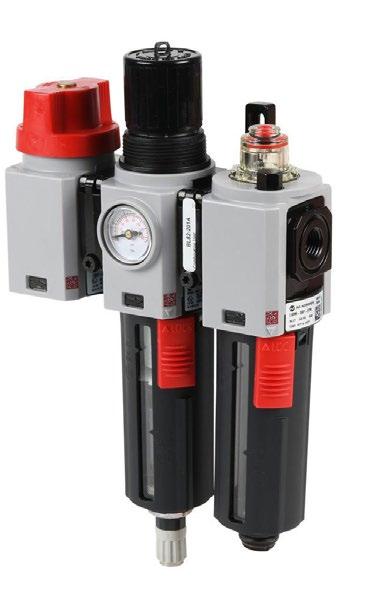
.Automation24 proudly announces the addition of Norgren pneumatic components to its portfolio, marking a significant milestone in the company’s journey. With this strategic move, Automation24 broadens its scope and capabilities to better serve its customers.
norgren air preparation products currently offered by Automation24 include regulators, filters, combination units (filter/regulator/lubricator), valves, and accessories. These proven air preparation products are built to overcome the common challenges of using compressed air.
The norgren excelon Plus 1/4” PTF combination unit, for example, combines several system-critical components: a 40 µm filter for particle and moisture removal, a highperformance pressure regulator, and a highly effective lubricator. The combination of these elements ensures efficient compressed air control while protecting sensitive equipment and extending the life of all system components.
Additional lines from norgren will be added throughout 2024, including pneumatic and electric actuators, control valves, vacuum generators, and air preparation solutions for process/food and beverage applications. With this expanded portfolio, Automation24 will ultimately be able to provide customers with a comprehensive suite of norgren compressed air solutions to meet the demands of applications that include factory automation, material handling, commercial vehicles, rail, life sciences, packaging, process control, and food and beverage.
For more information about Automation24 and its expanded portfolio www.automation24.com
Milton D’Silva examines the pros and cons of mobility of the future with the three available options.
By most accounts, humans learned to light fire around 2 million years ago and set in motion the wheels of progress. The wheel, by the way, was invented much later, in the 4th millennium BC. ever since, the use of energy has been central to all human activity and has become the index of development – the more developed a nation, the more energy it uses. This unbridled use of energy has a side effect – the generation of greenhouse gases (GHGs) – which has today snowballed into a major crisis. While GHGs are essential to maintaining the right temperatures on earth, it is the excess caused by unbridled use of energy that has caused the crisis of global warming. The burning of fossil fuels, mainly hydrocarbons like coal and petroleum products, is today the largest contributor to global climate change, accounting for over 75 percent of GHG emissions and nearly 90 percent of all carbon dioxide emissions. The world is now warming faster than at any point in recorded history. The warmer temperatures are disrupting the usual balance of nature, changing the natural weather patterns the world has experienced for centuries. The year 2023, it may be noted, has turned out to be the hottest year in recorded history. This poses many risks to human beings and all other forms of life on earth.
At 28%, transportation is a leading contributor to GHGs. This is the direct result of the combustion of fossil fuels in the different types of engines used to power various modes of transportation like cars, trucks, ships, trains and aircraft. With over 90% of the energy sources used in transportation originating from fossil fuels, it is obvious the world must now have cleaner alternatives to them. It is not just transportation, but use of energy as a whole, because electricity generation contributes another 25% of GHGs. Although the proportion is slightly lower than transportation, the energy landscape is marked by its own challenge – more than 60% of electricity generation still relies on fossil fuels. This dual reliance on fossil-based energy in both transportation and electricity generation underscores the urgent need for transformative changes to address the environmental consequences.

Given the close relationship between energy and mobility, the world is today engaged in a massive exercise seeking to decarbonise transportation and electricity generation, which holds immense potential to address the burgeoning global climate crisis. By transitioning to cleaner and more sustainable energy sources, such as renewables and alternative fuels, there is significant potential to reduce GHG emissions, making a substantial and positive impact on the fight against climate change. To this end, there has to be a concerted effort with close coordination among policymakers, industries and individuals, to prioritise and invest in initiatives that promote the decarbonisation of these critical sectors to achieve a more sustainable and resilient future.

Alternatives to fossil fuels have always been there and some of the better known and also in use, though not as widely, are bio-diesel, bio-alcohol, bio-gas, chemically stored electricity, hydrogen, non-fossil methane and natural gas, vegetable oil, and in recent years, synthetic fuels or e-fuels.
Decarbonising transportation & energy
The early automobiles were actually battery-powered electric Vehicles (e Vs) and were doing reasonably well before the mass-produced Ford Model T gained immense popularity. The eVs of that era simply could not counter the performance of the IC engine, especially after they got the self-start feature. Thus went the early eV into a long period of hibernation, only to be woken up after the oil shocks of the late 1960s and early 1970s. The eV was further jolted into action by the climate crisis of recent years. The
renewed interest in eVs was ignited in part due to the Lunar Roving Vehicle ferried to the moon by the 1971 Apollo 15 mission, and research on the batteries had resulted in better capacities even as the cost remained high. The first serious boost to eVs was provided by the CARB mandate in the uS State of California in the 1990s, which specified that automakers sell a small number of lower-emission vehicles, with zero emission being the ultimate goal. In response, several mainstream automobile companies either converted an existing model, or developed a new one with an electric drivetrain. These were at best token attempts and no serious eV barring the General Motors eV1 and Toyota RAV4 eV resulted from it. However, the hybrid Prius launched by Toyota in 1997 attracted global attention and won several awards and accolades, clearing the path for a renewed interest in eVs. An important development during
the first decade of the new millennium was the founding of Tesla Motors, a Silicon Valley startup in 2003, as an electric mobility and clean energy company.
In the span of 20 years since, almost all global automakers have at least one eV on offer, if not a portfolio of models to choose from. Global e V sales have risen dramatically, crossing the 10 million mark in 2022. The total eV sales more than tripled in three years, going from 4% in 2020 to 14% in 2022. The momentum further accelerated in 2023 with the total eV sales including plug-in hybrids totalling a whopping 14.2 million, an increase of over 35% over the previous year, which adds to close to 16% of total light vehicle sales globally. The scale of eV adoption is far from uniform and varies from region to country. In general, China leads the eV adoption rate, followed by europe and the uS.
In the meanwhile, the decarbonisation of electricity is already happening as close to 30% of global electricity today is produced from renewable sources. The International Renewable e nergy Agency (IR en A) estimates that 90 percent of the world’s electricity can and should come from renewable energy by 2050. The best thing about electricity is its ability to integrate renewable sources like hydropower, which is a traditional source of clean energy, and now wind and solar, which are more recent renewable sources.
The un Climate Action Plan lists out five reasons the world should accelerate the pace of decarbonising the energy mix, primarily led by clean electricity.
1. Renewable energy sources are everywhere – With over 80% of the world’s population dwelling in countries that are net importers for fossil fuels, volatility in fuel prices and global flashpoints add to their energy anxieties. Time they exploit renewable energy sources in their own backyard to get rid of import dependency.
2. Renewable energy is cheaper – Growing adoption and economies of scale are causing prices of renewable energy sources drop dramatically. estimates suggest cheaper electricity from renewable sources could provide 65 percent of the world’s total electricity supply by 2030 and could decarbonise 90 percent of the power sector by 2050.
3. Renewable energy is healthier – Statistics from the World Health Organisation (WHO) indicate about 99 percent of people in the world breathe air that exceeds air quality limits and threatens their health, causing up to 13 million deaths. Clean energy sources help clean the atmosphere as well.
4. Renewable energy creates jobs – The International energy Agency (IeA) estimates that the transition towards netzero emissions will lead to an overall increase in energy sector jobs, outpacing the job losses caused by the decline in fossil fuel production and distribution channels.
5. Renewable energy makes economic sense –Governments across the world spend about $7 trillion annually subsidising fossil fuels. On the other hand, even conservative estimates suggest just about $4 trillion a year needs to be invested in renewable energy until 2030 –

Transportation is a leading contributor to greenhouse gas emissions.
including investments in technology and infrastructure – to allow the world to reach net-zero emissions by 2050.
How clean is the eV in terms of the environmental impact? At a time when the adoption of e Vs is showing healthy growth are there doubts raised in certain quarters about the viability of the model? Japanese automaker Toyota, one of the global leaders in automobiles, has always been sceptical of eVs being touted as the only solution for clean mobility. While critics are quick to point out that in its passion to promote hybrids Toyota has neglected research on eVs, the company has a more nuanced approach. In January 2024, Toyota chairman Akio Toyoda speaking at an industry event in Tokyo was emphatic that electric vehicles should not be developed to the exclusion of other technologies, such as hybrid and hydrogen-powered cars. According to him, eVs will only reach 30% market share at most with the rest taken up by hybrids, hydrogen fuel cell and conventional IC engine cars albeit with synthetic fuels.
Akio Toyoda may not be wrong. Car buyers in the uS are not as enthusiastic about eVs after the initial response and high initial cost and range anxiety are not the only reasons for that. Tesla is offering discounts on its vehicles; Ford is scaling back on production estimates for eVs and even German major Audi is having second thoughts. This comes within
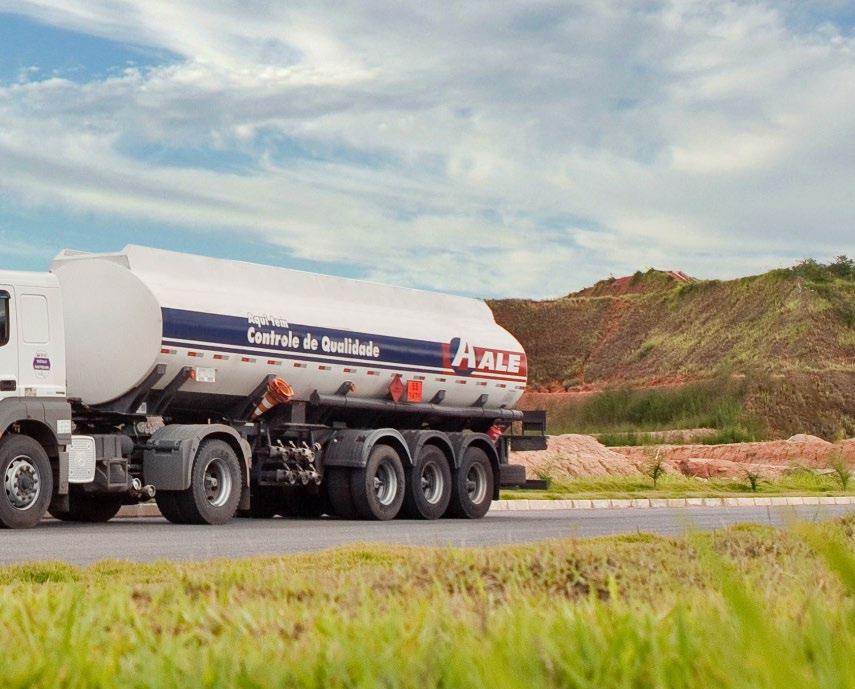
months of most automakers on either side of the Atlantic declaring their intention to go total electric by 2035.
In the uS, for example, the national Automobile Dealers Association (nADA), the national voice of franchised newcar dealerships, their employees and their customers for over 100 years, is opposed to the Biden Administration’s proposed new emissions standards. In May 2023, the uS environmental Protection Agency (ePA) proposed a rule for model years 2027-2032 light- and medium-duty vehicles that call for 60% of new vehicles sold in 2030 and 67.5% of new vehicles sold in 2032 to be eVs. even the Alliance for Automotive Innovation, which represents automakers in the uS, has stated that the ePA rule is ’neither reasonable nor achievable in the time frame provided’.
More recently, the issue has assumed political overtones with the Republican-led House of Representatives voting in December 2023 to stall the Biden administration’s proposal. “While eVs may play a large role in the future of the auto industry, Washington should not discount other technologies like hydrogen, hybrids, and the internal combustion engine,” is what Republican Tim Walberg is reported to have said. Former President Donald Trump, a strong contender in the presidential race later this year, has also said he would reverse the electric vehicle rules.
Similarly, in March 2023, the european union approved a landmark law to end sales of new CO2-emitting cars in 2035, but not before Germany got an exemption for cars running on e-fuels. The other country that made common cause with Germany in seeking exemption for e-fuels is Italy. The eu law requires all new cars sold to have zero CO2 emissions from 2035, and 55% lower CO2 emissions from 2030, versus 2021 levels. The targets are designed to drive the rapid decarbonisation of new car fleets in europe. The european Commission has pledged, however, to create a legal route for sales of new cars that only run on e-fuels to continue after 2035, after Germany demanded this exemption, which offers a potential lifeline to traditional vehicles – although e-fuels are not yet produced at scale.
This only means that despite the popularity of eVs and their clearly demonstrated efficacy towards clean mobility, there are still efforts being made to explore other alternatives to fossil fuels.
The other clean alternatives – hydrogen and e-fuels
By now, the potential of hydrogen as an automotive fuel is well established. It was John Bockris, a chemistry professor who in the early 1970s described hydrogen as an economical and environmentally friendly substitute for fossil fuels to power automobiles. Today there are production vehicles from Toyota, Honda and Hyundai running on the roads
in California, uSA. German Group BMW is also testing Toyota fuel cells for its hydrogen cars, while Detroit major General Motors is doing the same with Honda technology. There are also hydrogen fuel cell-powered buses and trucks plying in many countries – the majority of them in China. Traditional manufacturers of heavy diesel and CnG engines like Cummins and FPT Industrial are also working on hydrogen-powered IC engines which are at trial stages and soon expected to be in series production. The emerging hydrogen economy has captured popular imagination and government support across the world.
The other alternative – synthetic fuels or e-fuels – is also relying on hydrogen basically. e-fuels are produced through a process known as the Fischer-Tropsch synthesis, where hydrogen is combined with CO2 extracted from the air and converted into a liquid energy carrier, which is a synthetic hydrocarbon fuel, or e-fuel. The hydrogen used to produce the e-fuel is generated by the electrolysis process that breaks down water into its components of hydrogen and oxygen, and to that extent, it is the same process that produces hydrogen for fuel cell electric vehicles (FCe Vs) or other industrial applications. Here it is important to understand that the electricity used to produce hydrogen must be renewable, because using electricity generated from fossil fuels defeats the very purpose of the exercise. The burning of e-fuel in IC engines results in emissions, but the carbon dioxide thus emitted is less that used in producing it, and hence considered carbon neutral, or better still, emitting less CO2 than fossil fuels.
Those who are espousing the cause of e-fuels have formed the eFuel Alliance, an interest group committed to promoting political and social acceptance of e-fuels and to securing their regulatory approval. The alliance represents more than 170 companies, associations and consumer organisations along the e-fuel production value chain.
At this point, one may ask why use hydrogen to produce e-fuels when the same can be used for FCeVs? Or for that matter why use FCeVs when eVs are already popular and serving the purpose well? To understand that, one must study the pros and cons of each of these alternatives – eVs, Hydrogen and e-fuels.
The case for and against EVs
Among the three options that form the theme of this article, electric vehicles or eVs are generally considered cleaner than traditional gasoline cars in terms of environmental impact. However, it’s important to note that the overall efficiency of an electric vehicle depends on various factors, including how electricity is generated, the manufacturing process, and the lifespan of the vehicle.
While zero tailpipe emissions during operation is the biggest advantage of eVs, the actual environmental impact of the eV depends on the source of the electricity used for charging. The full benefit accrues only if the electricity comes from renewable sources. If the electricity is generated from fossil fuels, some or most of the environmental benefits are lost. Another major point is the environmental footprint of the manufacturing process, which is believed to be less for eVs
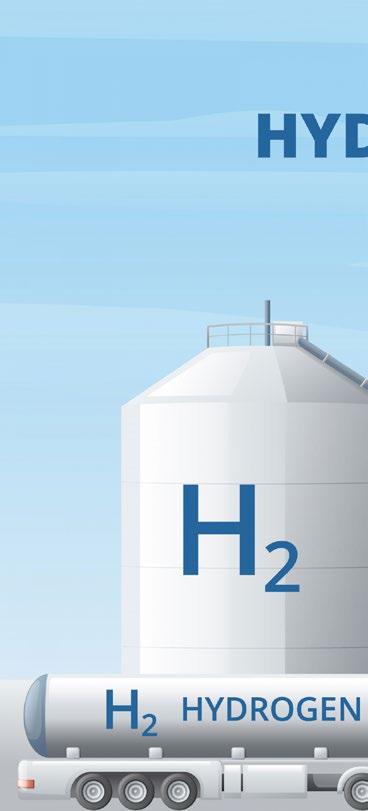
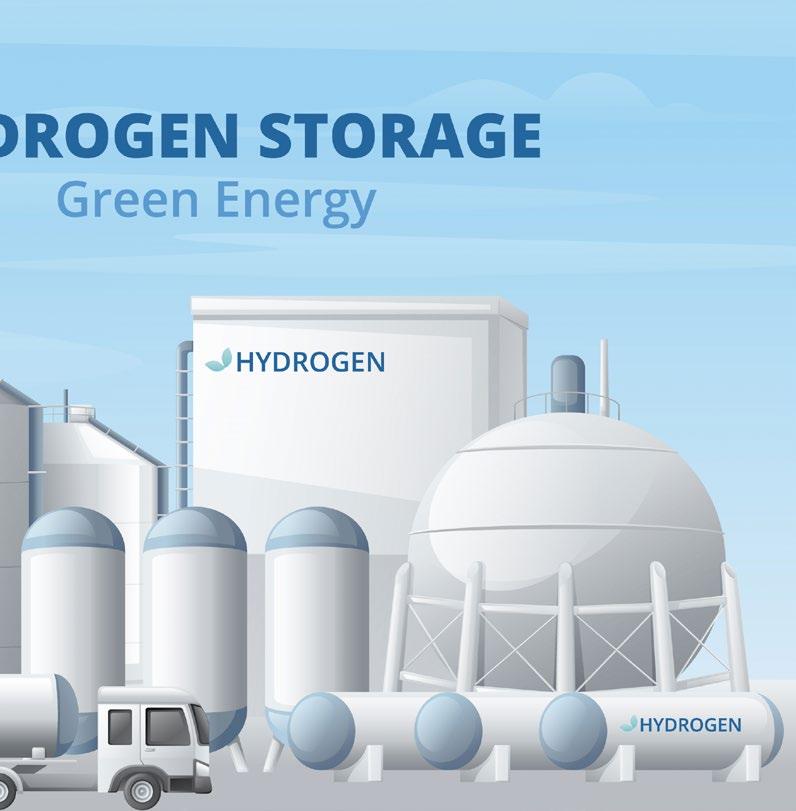
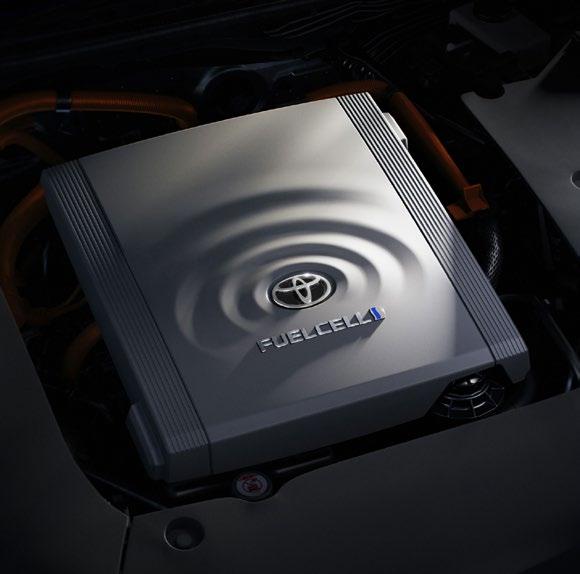

than fossil fuel cars. But critics point out that the production of batteries for electric vehicles, in particular, involves mining and processing raw materials like lithium, cobalt, and nickel, and this is an area that has not been fully explored for its true impact. Add to that, the cost of battery replacement and the total lifespan cost with recycling.
In summary, while electric vehicles are generally cleaner in terms of direct emissions, the overall environmental impact depends on various factors. efforts are being made to make both electric vehicles and the electricity grid more sustainable, and advancements in technology and recycling practices are helping address some of the challenges associated with electric vehicle production and end-of-life management.
The comparison between hydrogen fuel cell electric vehicles (FC e Vs) and battery-operated electric vehicles (B e Vs) involves various factors, and the superiority of one over the other depends on specific circumstances and priorities. In comparison with eVs, FCeVs offer key advantages like a longer range and quick refuelling – it takes only a few minutes to fill a hydrogen tank, whereas charging an electric vehicle can take significantly longer. Hydrogen fuel cells can also be lighter than large battery packs, which can contribute to better efficiency and handling in some cases. Above all, hydrogen fuel cells are highly suitable for hard-
to-electrify mobility segments like heavy transportation, aviation and shipping.
However there are also challenges and concerns when it comes to the use of hydrogen, and these are mainly threefold:
• The infrastructure for producing, transporting, and dispensing hydrogen is currently limited compared to the widespread availability of electric charging stations.
• The production of hydrogen often involves energyintensive processes, which can impact the overall efficiency and environmental benefits of hydrogen fuel cells.
• Hydrogen fuel cell vehicles are generally more expensive to produce than electric vehicles, primarily due to the cost of the fuel cell technology and the materials involved.
At the heart of the argument in favour of e-fuels put forward by the eFuel Alliance are four main points:
• e-fuels have the potential to be carbon-neutral or even carbon-negative if the CO2 used in their production is sourced from the atmosphere or industrial processes

• e-fuels can be used in existing internal combustion engine vehicles with minimal modifications, and are ideal for hardto-electrify segments mentioned earlier in favour of the hydrogen fuel cell
• e-fuels can leverage existing infrastructure for storage, transportation, and distribution, making it potentially easier to integrate them into the existing energy and mobility systems, and
• e-fuels can serve as a form of energy storage, as they can be produced when there is an excess of renewable energy.
Against the potential benefits of e-fuels mentioned above, there are some real challenges associated with the production of e-fuels, including the efficiency of the conversion processes and the overall energy losses. The efficiency of converting renewable electricity into synthetic fuels needs improvement for these fuels to be a truly sustainable and scalable solution. Moreover, with the headstart enjoyed by eVs and the rapid scaling of charging infrastructure, it will be interesting to see whether there will be popular demand for e-fuels, if and when there is production with scale.
Summing up
In conclusion, the choice between battery-operated electric vehicles, hydrogen-powered fuel cell vehicles and e-fuels as the third alternative, shall depend on individual preferences, regional infrastructure, and specific use cases. All three technologies have their merits and challenges, and ongoing advancements may continue to shape the landscape of sustainable transportation. Above all, rapid decarbonisation of electricity is essential for the success of these options.
References
1. https://www.efuel-alliance.eu/
2. https://industry-india.com/market-overview/69893-arewe-really-done-with-ic-engines
3. https://pressroom.toyota.com/advanced-to-the-coretoyota-mirai-offers-an-electrifying-ride/
4. https://www.industryemea.com/marketoverview/75637-the-green-hydrogen-path-to-net-zero

uEye+ XCP: Small industrial camera with outstanding low-light performance
The new uEye+ XCP and XLS cameras perform particularly well in low-light applications.
Compact, cost-effective and with exceptional image quality in low ambient light: IDS is the first industrial camera manufacturer to offer the 2 MP sensor IMX662 in both colour and monochrome versions. The sensors belonging to Sony’s Starvis 2 series are designed for maximum light sensitivity. They are now available either as compact ueye+ XCP models or as board-level versions in the ueye+ XLS series.
Both camera families are characterised by their compact design and are therefore suitable for embedded applications, for example. While ueye+ XCP models have a completely closed housing measuring 29 x 29 x 17 mm with a C-mount lens holder, the ueye+ XLS models measuring just 29 x 29 x 7 mm are available as board-level cameras with or without a C/CS- or S-mount lens holder. The new uSB3 industrial cameras deliver particularly impressive results when used in low-light conditions.
In addition to the special, highly sensitive pixel technology, customers benefit from another distinctive characteristic, as Jürgen Hejna, Product Manager ueye at IDS, explains: “We offer this rolling shutter sensor with anti-reflection coating, which further improves the image quality.” Thanks to this feature, disruptive reflections – known as lens flare – are reduced or completely avoided within the camera.
In addition, the new models offer excellent value for money, as Jürgen Hejna explains: “Customers can get the new models for well under 200 euros list price.” The company plans to make the entire range of Sony Starvis 2 sensors available in different camera families in the future. This will provide customers with the greatest possible flexibility when selecting these light-sensitive sensors.
www.ids-imaging.com

The uEye XLS board-level camera has a wide range of uses - e.g. in embedded applications
Project is critical to enhance the resilience of Algeria’s energy ecosystem, supporting Europe’s energy security by ensuring stable gas supplies.

Baker Hughes, an energy technology company, announced it was awarded a major contract from SOnATRACH for a gas-boosting project for the Hassi R’Mel gas field in Algeria. The contract is part of a broader order awarded to a consortium between Baker Hughes and Tecnimont, part of technology and engineering group MAIRe. The signing ceremony took place in Algiers in the presence of the three company CeOs: Rachid Hachichi of SOnATRACH, Lorenzo Simonelli of Baker Hughes, and Alessandro Bernini of MAIRe, as well as H.e. Mohamed Arkab, Minister of energy & Mines.
• Consortium with Tecnimont (MAIR e ) will supply SOnATRACH with 20 compression trains that are expected to boost gas production at the Hassi R’ Mel gas field in Algeria, one of the world’s largest.
• Agreement strengthens Italy-Algeria bilateral relations as Baker Hughes and Tecnimont will leverage their Italian industrial expertise to deliver on the project.
“The announcement marks a notable milestone in our historical collaboration with SOnATRACH for key energy projects in Algeria that have played a crucial role in supplying reliable energy to europe,” said Lorenzo Simonelli, chairman and CeO of Baker Hughes. “We have long believed that it is critical to increase gas within the overall global energy mix to help achieve a lower-carbon economy. This project helps to solve for energy producers’ multi-faceted challenge of driving sustainable energy development as energy demand increases. We are proud to support such a critical energy project in partnership with Tecnimont.”
Baker Hughes’ awarded scope includes the supply of 20 compression trains based on Frame 5 gas turbine and BCL compressor technology, which will be installed across three gas boosting stations within the Hassi R’ Mel gas field. Located 550 km south of Algiers, Hassi R’ Mel is the largest gas field in Algeria and one of the largest in the world, representing a key source of energy supply for Algeria and europe. Baker Hughes’ proven technology solutions are expected to play a central role in the project by boosting and stabilizing the pressure of natural gas and increasing production at site, which will enhance Algeria’s domestic energy system and economy as well as europe’s energy security.
The new gas-boosting stations are part of Algeria’s ambitious plan to strengthen its role in the global energy market and its commitment to natural gas as a key energy source for socio-economic development. According to Bloomberg neF, Algeria became the second-largest gas supplier to europe in 2023, further strengthening the country’s role in enhancing the energy security of the continent, particularly in Italy where Algeria represents the biggest single source of import. The Hassi R’ Mel Project is part of a broader strategic collaboration between Algeria and Italy, which includes recently signed agreements to foster bilateral cooperation and provide financial support for Algeria’s gas production as part of the Mattei Plan. The Mattei Plan seeks to promote cooperation between Africa and Italy along five main policy pillars: education and training, agriculture, health, water and energy. Packaging of the compressor trains, as well as manufacturing of the compressors and testing of the trains, will take place at Baker Hughes’ facilities in Italy.
www.bakerhughes.com
All these efforts align with Environmental, Social, and Governance implementation across all Pertamina’s business lines and operations.
Jakarta – Director of Finance of PT Pertamina, Emma Sri Martini, representing President Director of Pertamina, Nicke Widyawati, and Chief Executive Officer of the Japan Cooperation Center For Petroleum & Sustainable Energy, Tsuyoshi Nakai, signing the MoU Exchange for “Collaboration in the Field of Capability Development & Technical Cooperation in the Energy Sector”.
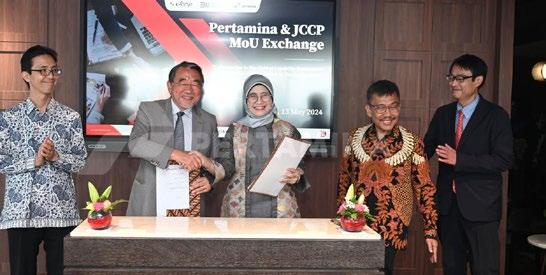
Pertamina and the Japan Cooperation Center For Petroleum & Sustainable e nergy have signed a Memorandum of u nderstanding regarding “Collaboration in The Field of Capability Development & Technical Cooperation in The energy Sector” in Jakarta. Director of Finance of Pertamina, emma Sri Martini, stated that the collaboration between Pertamina and JCCP is part of Pertamina’s efforts to address energy transition challenges, particularly the energy trilemma, through initiatives and cooperation with various parties. “One of the collaborations with JCCP involves three potential aspects; capacity development, which includes energy conservation and sustainable digitalization; women empowerment, focusing on career development and women empowerment; and technical assistance, which includes research initiatives supported by JCCP, such as studies on CO2 reform technology implementation in Indonesia, agroforestation development of rubber trees to produce carbon-neutral oil, and Sustainable Aviation Fuel development,” said emma.
Chief executive Officer of JCCP, Tsuyoshi nakai, appreciated the collaboration with Pertamina. “Pertamina and JCCP have had a long-standing business relationship, and this Mou is an initiative to enhance our cooperation. To strengthen the relationship, a cooperation dialogue forum has been established to discuss our collaboration achievements and plans,” he said. CeO of JCCP, Tsuyoshi nakai, added that this agreement’s signing is part of the Asia Zero emission Community event, which received full support from both the Indonesian and Japanese governments in December 2023.
At the same event, the Head of the Bureau of Communication, Public Information Services, and Cooperation of the Ministry of energy and Mineral Resources, Agus Cahyono Adi, said
the Ministry of energy and Mineral Resources supports this collaborative effort. This is important, as Pertamina is a major hope of the government to become a leader and pioneer, aiming towards the net zero emissions target in the future.
Vice President of Corporate Communication of Pertamina, Fadjar Djoko Santoso, added that this Mou is a significant milestone in the ongoing collaboration process. “This Mou signing signifies that we have reached a more solid level of collaboration and demonstrates both parties’ commitment to create innovation and make tangible efforts towards mutually beneficial cooperation for both Pertamina and JCCP, accelerating the energy transition in terms of human resource preparation and energy projects,” explained Fadjar.
The Mou exchange was conducted by the Director of Finance of Pertamina, emma Sri Martini, and the CeO of JCCP, Tsuyoshi nakai. It was witnessed by economic Minister - embassy of Japan in Indonesia - ueda Hajime, Special Counselor - Haruhiko Ando, and Head of the Bureau of Communication, Public Information Services, and Cooperation of the Ministry of energy and Mineral Resources - Agus Cahyono Adi. Senior leaders and executive board members from both parties also attended the event. Pertamina, as a leading company in the energy transition, is committed to supporting the net Zero emission 2060 target by continuously promoting programs that directly impact the Sustainable Development Goals achievement.
www.pertamina.com
K.A. Gerardino explores Generative AI, where precise engineering meets limitless creativity to reshape intelligent systems.
Generative AI is an interesting area of study that involves the creation of machines capable of producing content, such as images, text, or music, that is virtually indistinguishable from content created by humans. This technology relies on sophisticated algorithms and models to generate new, realistic data based on patterns learned from existing data.
In this comprehensive exploration, we discover the advanced tools, intricate models, and real-world applications propelling the evolution of Generative AI. Ready yourself for an in-depth analysis of algorithms and frameworks, uncovering the inner workings that position artificial intelligence at the forefront of innovation. Join us as we navigate the complexities of this transformative field, where precision engineering converges with boundless creativity to redefine the very fabric of intelligent systems.
The global generative AI market size reached uS$12.3 billion in 2023 and is expected to hit uS$58 billion by 2032, demonstrating a growth rate (CAGR) of 18.81% during the period of 2024-2032, according to IMARC Group. The increasing volume of generated data, the advancement of cutting-edge machine learning techniques, the expansion of the information technology (IT) sector, and the growing adoption of products across various industries are among the key factors driving the market forward.
embarking on a comprehensive exploration of Generative AI reveals a dynamic ecosystem teeming with innovation, where tools, models, and applications converge to redefine the very fabric of artificial intelligence. Let us delve into the intricate layers of each key aspect, unravelling the nuances that collectively contribute to the transformative nature of this growing field.

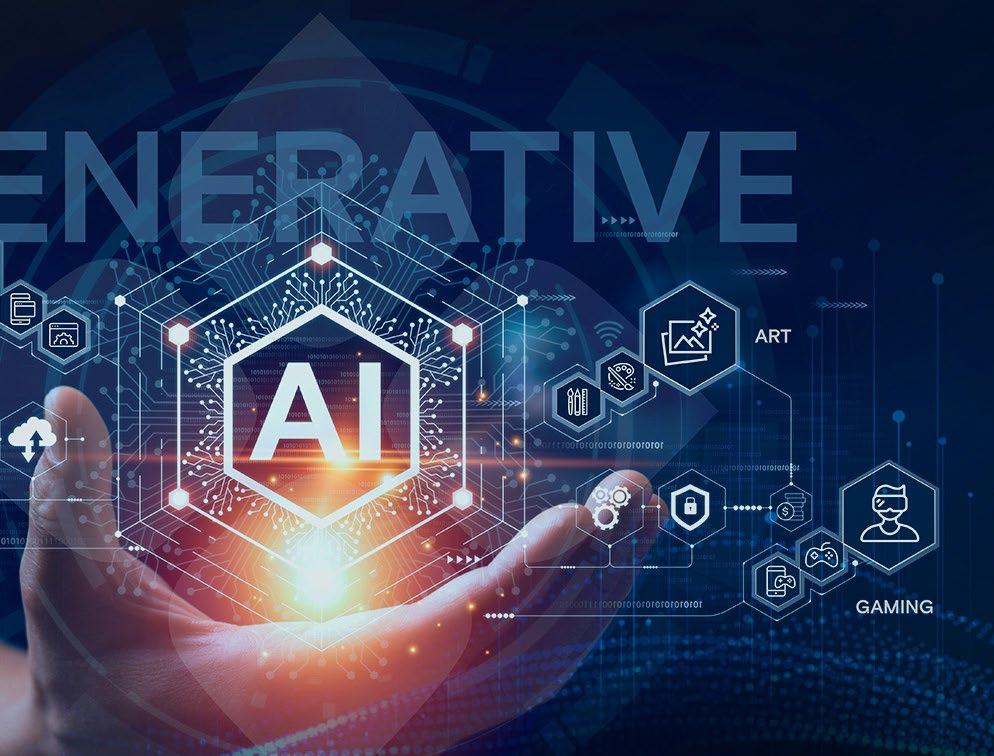
Here are some key aspects of generative AI, including tools, models, and applications:
Generative AI Tools
• OpenAI’s GPT (Generative Pre-trained Transformer): GPT-3, the latest version, is a powerful language model that has been widely used for various natural language processing tasks. It can generate coherent and contextually relevant text based on prompts provided to it.
• DeepDream: Developed by Google, DeepDream is an image generation tool that utilizes neural networks to enhance and modify images. It highlights and exaggerates patterns and features in images to create visually stunning and sometimes surreal results.
• StyleGAN (Generative Adversarial Network): StyleGAn is a popular model for generating realistic images. It excels in creating high-quality, diverse images with customizable styles. StyleGAn2, an improved version, has been widely adopted in the creation of deepfake images.
• GAns (Generative Adversarial networks): GAns are a class of algorithms where two neural networks, a generator, and a discriminator, are trained simultaneously through adversarial training. GAns are used for various generative tasks, such as image and video synthesis, as well as style transfer.
Generative AI Models
• BERT (Bidirectional Encoder Representations from Transformers): Although initially designed for natural language understanding, B e RT has been used for generative tasks as well. It understands the context of words in a sentence, making it suitable for generating coherent and contextually relevant text. Although initially designed for natural language understanding, BeRT has been used for generative tasks as well. It understands the context of words in a sentence, making it suitable for generating coherent and contextually relevant text.
• VQ-VAE-2 (Vector Quantized Variational Autoencoder 2): VQ-VAe-2 is an advanced model for image generation. It uses vector quantization and variational autoencoder techniques to produce high-quality and diverse images.
• Content Creation: Generative AI is used in the creation of digital content, including images, text, and music. This can be applied in various industries, from graphic design to entertainment.
• Deepfake Technology: GAns have been employed in the development of deepfake technology, enabling the creation of realistic-looking videos and images with manipulated content.
• Artificial Creativity: Generative AI is being explored as a tool for enhancing human creativity. Artists and designers use these models to inspire and assist in the creative process.
• Data Augmentation: In machine learning, generative models are utilized for data augmentation, creating additional training examples to improve the robustness and generalization of models.
• Drug Discovery and Molecular Design : Generative models are applied in pharmaceutical research to generate novel molecular structures for drug discovery.
While generative AI holds tremendous potential, it also raises ethical concerns, particularly in the context of deepfake technology and the potential misuse of generated content. Striking a balance between innovation and responsible use is crucial as this field continues to evolve.

Generative AI market growth factors
The generative AI market has witnessed significant growth in recent years, driven by several factors that contribute to its adoption across various industries. Here are some key growth factors for the generative AI market:
• Advancements in Deep Learning: Breakthroughs in deep learning architectures, such as Generative Adversarial networks (GAns) and Transformers, have significantly improved the capabilities of generative AI models. These advancements have led to the creation of more realistic and sophisticated content, driving demand in the market.
• Increased Computing Power: The availability of powerful GP u s (Graphics Processing u nits) and TP us (Tensor Processing u nits) has enabled the training of larger and more complex generative models. This increased computing power has played a crucial role in the development of state-of-the-art generative AI applications.
• Open-Source Frameworks and Tools: The availability of open-source frameworks and tools, such as TensorFlow and PyTorch, has democratized access to generative AI technology. This has lowered the entry barriers for developers and businesses, fostering innovation and expanding the overall market.

• Rise of Pre-trained Models: Pre-trained models, like OpenAI’s GPT and various versions of StyleGAn, have gained popularity. These models, trained on massive datasets, can be fine-tuned for specific applications, accelerating the development process, and making generative AI more accessible.
• Diverse Applications Across Industries: Generative AI finds applications in a wide range of industries, including entertainment, healthcare, finance, and manufacturing. This versatility has contributed to its market growth as businesses explore innovative ways to leverage generative AI for various use cases.
• Increased Data Availability: The abundance of digital data available for training generative models has been a crucial factor in their success. Large datasets allow models to capture diverse patterns, resulting in more accurate and realistic outputs.
• Creative Content Generation: The demand for creative content, including images, videos, and text, in industries such as marketing, design, and entertainment has fueled the growth of generative AI. Businesses are leveraging these technologies to streamline content creation processes and deliver engaging material.
• Research and Development Investments: Increased investments in research and development by both private companies and public institutions have driven innovation in generative AI. This ongoing research contributes to the development of more advanced models and applications.
• Growing Awareness and Adoption: As awareness of generative AI capabilities spreads, more businesses are recognizing the potential benefits of incorporating these technologies into their operations. The growing adoption across sectors further fuels market growth.
• Regulatory Support and Ethical Considerations: Clear regulatory frameworks and ethical guidelines around the use of AI technologies, including generative AI, provide a supportive environment for businesses to invest in and deploy these solutions. Addressing ethical concerns ensures responsible development and use of generative AI.
The convergence of these factors is driving the generative AI market, and its continued evolution is expected to bring about further innovations and applications across diverse industries in the coming years.
Restraining factors in Generative AI
While generative AI has experienced substantial growth and advancement, there are also several restraining factors and challenges that impact its widespread adoption.
Generative AI models often require large amounts of data for training, which raises concerns about data privacy and security. The use of personal or sensitive data in training sets may lead to privacy breaches and ethical issues. The potential for misuse of generative AI, especially in the creation of deepfakes or other malicious content, raises ethical concerns. Addressing the responsible and ethical use of these technologies is crucial to mitigate negative consequences.
Generative AI models can inadvertently learn and perpetuate biases present in the training data. This can lead to biased outputs, reinforcing existing societal prejudices and discrimination. ensuring fairness and addressing bias in generative models is an ongoing challenge.
Many generative AI models, especially complex neural networks, lack interpretability. understanding how these models generate specific outputs can be challenging, limiting their trustworthiness in critical applications where interpretability is essential.
Training and running sophisticated generative AI models often require significant computational resources, including powerful GPus and TPus. This resource intensiveness can be a barrier for smaller organizations or those with limited computing infrastructure.
The legal landscape surrounding generative AI, particularly in the context of intellectual property rights and ownership of generated content, is still evolving. Clear regulatory frameworks are needed to address legal challenges associated with generative AI.
Generative AI models may face challenges in generalizing well to diverse and unseen data. Overfitting to specific patterns in the training data may result in poor performance on new and varied inputs.
understanding and predicting the behaviour of generative AI models can be difficult. This lack of understanding may hinder the adoption of these models in critical applications where predictability is essential.
Building and maintaining state-of-the-art generative AI models can be expensive. This cost factor may limit the accessibility of generative AI technologies for smaller businesses and organizations with budget constraints.
Convincing users to trust outputs generated by generative AI models, especially in critical applications like healthcare or finance, can be challenging. e stablishing trust and acceptance is crucial for the successful integration of generative AI solutions.
Developing and deploying generative AI models often requires a combination of expertise in machine learning, computer science, and domain-specific knowledge. The need for interdisciplinary skills may pose challenges for organizations lacking diverse expertise.
Addressing these restraining factors requires a concerted effort from researchers, developers, policymakers, and industry stakeholders to ensure the responsible and ethical development, deployment, and use of generative AI technologies. Ongoing research and collaboration are essential to overcome these challenges and unlock the full potential of generative AI.
The generative AI landscape is undergoing rapid transformation, propelled by advancements from industry frontrunners, as highlighted by the IMARC Group. Presently, major market players are at the forefront of innovation, introducing novel models, refining existing ones, and employing avant-garde techniques to elevate the quality and diversity of generated content. notably, investments in research and development are directed towards enhancing image and video synthesis, with applications spanning virtual reality, gaming, content creation, and special effects.
In addition to pioneering technological advancements, key players in the generative AI arena are actively working towards democratizing access to this cutting-edge technology. Initiatives include the development of userfriendly tools, platforms, and APIs designed to empower developers, researchers, and businesses, ensuring seamless integration and utilization of generative AI capabilities. Furthermore, strategic collaborations through partnerships and mergers and acquisitions are a focal point for market leaders, strategically fortifying their positions in this dynamic landscape.
Among the notable entities shaping the generative AI market are:
• Adobe Inc. has been at the forefront of creative software and tools for decades. Their investment in generative AI is evident through products like Adobe Sensei, which leverages AI to enhance user experiences, automate tasks, and generate content. Its integration of generative AI into its suite of creative applications empowers designers, marketers, and content creators to produce personalized, high-quality content efficiently.
• Amazon Web Services Inc. (AWS) provides cloud-based infrastructure and services, including machine learning and AI capabilities. Their SageMaker platform enables developers to build, train, and deploy generative AI models. AWS democratizes access to AI tools, making it easier for businesses to adopt generative AI solutions without heavy upfront investments.
• D-ID specializes in privacy protection through AI. Their technology anonymizes facial images while preserving their utility. In an era of privacy concerns, D-ID’s generative AI solutions are crucial for safeguarding sensitive data, especially in industries like healthcare and finance.


• Google LLC’s research and development in generative AI have led to breakthroughs like DeepDream and BeRT. They also offer tools like TensorFlow and AutoML. Google’s opensource contributions and AI-driven products influence the entire industry. Their generative models enhance search, language understanding, and content creation.
• MOSTLY AI Inc. focuses on synthetic data generation. Their platform creates privacy-preserving synthetic datasets for training AI models. Synthetic data is essential for training robust generative models while protecting user privacy. MOSTLY AI’s approach addresses data scarcity and privacy concerns.
• OpenAI is renowned for its research in natural language processing (nLP) and generative models. Their GPT series (including ChatGPT) has transformed how we interact with AI-generated content.OpenAI’s democratization of largescale language models has sparked innovation across industries, from chatbots to content creation.
• Rephrase.ai specializes in video synthesis using AI. Their technology generates realistic video content from text descriptions. Video content is increasingly vital for marketing, entertainment, and communication. Rephrase. ai’s solutions streamline video production.
• Synthesia offers AI-driven video production tools. Their platform enables automatic video creation by converting text into lifelike videos.The company’s technology accelerates video content production, making it accessible to businesses and creators. Specific data related to Synthesia’s market share is not explicitly mentioned, but their impact aligns with the broader generative AI market trends.
Our exploration into the expansive domain of generative AI extends beyond the central focus on leading market participants, encompassing a broader spectrum of pivotal advancements. In this segment, we delve into ’Other Key Industry Developments,’ revealing a rich tapestry of fresh ideas, strategic partnerships, and emerging trends that are leaving an indelible mark on the trajectory of generative AI. From groundbreaking research projects to transformative alliances and technological milestones, the evolving landscape unfolds with each noteworthy endeavour.
In June 2023, Salesforce made a significant stride by introducing two generative AI products tailored for the commerce experience and personalized consumer engagement—Commerce GPT and Marketing GPT. The latter, Marketing GPT, harnesses real-time data from Salesforce’s cloud platform to generate innovative audience segments, personalized emails, and refined marketing strategies.
Similarly, in the same month, Accenture and Microsoft forged a collaborative effort to empower companies in transforming their businesses through the accelerated potential of generative AI driven by the cloud. This alliance is designed to guide customers in responsibly integrating and extending technology to suit their unique business needs.
May 2023 witnessed SAP Se joining forces with Microsoft to address fundamental business challenges through the incorporation of the latest enterprise-ready innovations. This strategic integration is poised to usher in new experiences, enhancing how businesses attract, retain, and optimize the quality of their workforce.
In the realm of startup acceleration, April 2023 marked a milestone as Amazon Web Services, Inc. unveiled the global Generative AI Accelerator. This initiative provides startups with access to impactful AI tools and models, optimization of machine learning stacks, customized go-to-market strategies, and more.
Lastly, the collaborative efforts of Adobe and n VIDIA in March 2023 stand as a testament to the industry’s commitment to advancing generative AI and fostering sophisticated creative workflows. This partnership aims to innovate advanced AI models seamlessly integrated into applications widely used by significant developers and markets, charting a course for the future of generative AI.
Generative AI in 2024
Let’s now cast our gaze into the crystal ball of generative AI and catch a glimpse of what the landscape holds for us in 2024.
In the ever-evolving landscape of artificial intelligence, the advent of advanced generative models marks a pivotal moment. As we stand on the cusp of innovation, GPT-4, the successor to the groundbreaking GPT-3, promises to propel us into uncharted territories of natural language understanding, creative expression, and interactive capabilities. GPT-4 is not confined to the realm of text alone. The upcoming generation of language models is set to transcend boundaries, seamlessly integrating multimodal inputs such as images, audio, and video. This expansion will usher in a new era of immersive and expressive interactions, pushing the boundaries of what AI can achieve.
The democratization of artificial intelligence is underway with the rise of fine-tuning tools. enabling users to tailor pretrained models to specific tasks, these tools are becoming commonplace. The ability to customize AI empowers businesses and individuals alike, fostering a new era of adaptability to unique needs. Domain-specific models will further enrich this customization trend, offering specialized solutions for fields such as law, medicine, and science. The fine-tuning of models for niche applications promises to enhance performance and relevance in specific domains.
As AI continues its ascent, the need for ethical considerations becomes paramount. efforts to mitigate bias in generative models will intensify, with a strong focus on fairness, transparency, and accountability. The interpretability of AI models will also see significant advancements, employing techniques like attention maps and rule-based explanations to demystify their decision-making processes.
The collaboration between human creativity and AI is set to reach new heights. Artists, musicians, and writers will join forces with AI to produce innovative works across various mediums. e xpect AI-generated music, paintings, and literature to grace galleries and concert halls, showcasing the symbiotic relationship between human ingenuity
and artificial intelligence. Tools facilitating style transfer will proliferate, allowing users to seamlessly blend artistic styles. Imagine Picasso-inspired selfies or engaging in conversations with Shakespearean chatbots, blurring the lines between human and machine-generated creativity.
In the realm of healthcare, generative models are poised to revolutionize drug discovery. Predicting molecular structures, simulating protein interactions, and optimizing drug candidates will be accelerated by these advanced AI systems. Medical imaging, powered by AI-generated visuals, will play a crucial role in diagnosis, treatment planning, and disease monitoring.
The future of content creation is automated, with AI taking the reins in writing articles, blog posts, and marketing copy. Personalized experiences will become the norm, with AI delivering tailored news summaries, advertisements, and dynamic website content. Conversational AI, in the form of chatbots and virtual assistants, will evolve to become more human-like, handling diverse tasks from customer queries to emotional support.
Realistic video generation is on the horizon, with tools like DALL-e paving the way for AI-generated video content. This evolution will transform advertising, entertainment, and education. However, ethical challenges loom, requiring robust detection methods and clear ethical guidelines to address the rise of deepfakes.
AI-generated environments will redefine the gaming landscape, providing increasingly realistic virtual worlds for gaming, training simulations, and architectural visualization. n on-player characters ( n PCs) will possess dynamic personalities and lifelike behaviour, enhancing the overall gaming experience.
In a harmonious blend of human and AI capabilities, we will witness more projects where AI assists human creativity. Musicians composing alongside AI, writers brainstorming with language models—the possibilities are endless, representing a harmonious fusion of human intuition and AI capabilities.
The future of AI is decentralized, with on-device generative AI gaining prominence. Models running directly on devices, from phones to IoT devices, will address privacy concerns and mark a paradigm shift in how AI is deployed. Synthetic data generated by these models will further contribute to training while preserving individual privacy. As we navigate this dynamic landscape, one thing is certain: the future is full of surprises. Generative AI is at the forefront of shaping our world in ways we cannot fully predict. So, buckle up for an exciting journey into the AI-driven future!

Alesta® BioCore™ provides a sustainable alternative to incumbent products containing fossil fuel-based polyester resins.
Axalta Coating Systems, a leading global coatings company, has launched its Alesta® BioCore™ range of powder coating solutions derived from nonfood organic waste. The new offering enables up to a 25% reduction in CO2 emissions compared to incumbent products containing fossil fuel-based polyester resins, while offering the same performance benefits and properties.
The new range marks another milestone for Axalta after becoming the first manufacturer within the powder coatings industry to receive the ISCC Plus accreditation for biobased feedstock sourcing practices earlier this year.
As construction, architecture and industrial customers work to reduce their carbon footprint, replacing traditional polyester resins with sustainable solutions like Alesta® BioCore™ provides a quick and cost-effective way to cut scope 3 emissions. This is made possible via the use of natural raw materials sourced from sustainable and fully traceable non-food sources, which eliminates any additional burden on food supply. Such materials contain significantly lower levels of embodied carbon, with all of the same benefits as fossil fuel-based equivalents.
The new range of biobased powder coatings includes:
• Alesta® SD BioCore™ Architectural SuperDurable is a range of super durable, biobased powder coatings formulated with high performance exterior grade pigments of the highest quality. This Qualicoat Class II- and AAMA2604certified product line delivers exceptional weather and uV resistance and is backed by a warranty of up to 25 years

• Alesta® AP BioCore™ Architectural is a range of standard durable, biobased powder coatings formulated with high quality exterior grade pigments. Designed for outdoor architectural substrates and outdoor structures such as cladding, it is compliant with standards such as Qualicoat Class I, AAMA 2603 and GSB Florida 1 (Standard) and is backed by a warranty of up to 15 years
• Alesta® IP BioCore™ Industrial, Alesta® IP is a range of biobased powder coatings for outdoor industrial applications, offering excellent weather resistance, outstanding mechanical properties for outdoor durability, and first-rate reactivity
The products will initially be sold in europe from 21 May. System houses, architects, fabricators and other consumers of powder coatings will have a greater range of options to choose from, depending on their sustainability goals. The new Alesta® BioCore™ range helps customers minimise their environmental impact throughout the supply chain.
Shelley Bausch, President, Global Industrial Coatings at Axalta, said: “Sustainability is a key focus area for our business and our customers and partners, who are increasingly focused on addressing their environmental footprint. The Alesta® BioCore™ range of powder coatings can have a significant and immediate impact, cutting emissions by up to 25 percent when compared to incumbent solutions.
“Our mission is to support our customers on their sustainability journey and by innovating with purpose to develop sustainable solutions from biobased materials, we are empowering them to reduce their impact on the planet. By giving this alternative, we hope to drive positive change and inspire a greater awareness of green practices for a better tomorrow.”
For more information on Axalta’s commitment to sustainability, please visit: https://www.axalta.com/ corporate/en_uS/sustainability.html

Stephen Graham, Executive Vice President and General Manager, Nexus, Hexagon, introduces us to the 4 building blocks of the industrial metaverse, highlighting some of the key issues.
The industrial metaverse promises to supercharge collaboration in a newly connected world
It’s common to hear the metaverse described as a 3D experience layer of the internet. The “industrial metaverse” is a more difficult concept to define. According to Forrester, it’s an umbrella term for a collection of different technologies. Some of those technologies have existed for years just waiting to come together.
In this article, we take an introductory look at the 4 building blocks of the industrial metaverse, highlighting some of the key issues.
Real-Time Collaboration
As much a defining characteristic as a building block, realtime collaboration is a crucial prerequisite to the industrial metaverse. At its core, the metaverse is a communication tool, a way of sharing ideas and data. It enables individuals or teams to work together across physical distances using digital technologies.
When we think of the metaverse we think of cutting-edge virtual reality tools, but often the technology has existed for decades. Microsoft has been in this space since at least 1996 with its netMeeting software which included desktop and file sharing alongside video conferencing. The evolution of that technology is a vital part of the business environment. Many companies and products are competing in this market with offerings like video conferencing and workplace collaboration software.
From design and engineering to production, quality assurance and beyond, manufacturing is necessarily a collaborative process – there are lots of problems to solve throughout the product lifecycle. That makes it an ideal candidate for new collaborative tools like our own digital reality platform nexus. In the past it was common to have teams of engineers with different specialisations all in the same building, working closely together. In one of our recent blogs we discussed how the process of digitalisation

has brought huge benefits, but at a cost. That cost has been the fragmentation and separation of once close networks.
The concept of the industrial metaverse and the group of technologies behind it represent a solution turning that problem into a huge opportunity.
The second building block, reality capture, involves the use of technologies like 3D scanning and LiDAR to enable detailed and accurate digital twins of physical environments or objects. That reality capture data also enables people to immerse themselves in visualisations of products, processes and even complex factory environments.
If you can make a close representation of the real world and bring it into a digital space, it unlocks a wealth of possibilities for one simple reason. What we design isn’t always what we make. The practices used in virtual engineering software or in CAD/CAM workflows, can be applied to more accurate and up-to-date representations captured from the real world to solve problems with confidence in an accurate virtual sandbox environment.
One of the most Illustrative applications for this technology is in factory design and layout. For example, modern automotive factories are some of the most complex production facilities in the world. We’re talking about a multistage process with thousands of individual tasks, often using highly specialised equipment. Think about the continuous movement of machinery, various conveyor systems, robotics, combined with human workflows with
ergonomic considerations, and health and safety protocols, the list goes on.
By building a digital twin that combines simulations with reality capture, we can accurately reproduce every complex detail in a virtual space, then go in and experiment with different configurations creating and testing unlimited prototypes in a virtual space. In the past we created everything separately. When reality capture and real-time collaboration come together, that linear workflow, and all the problems associated with it, melt away.
For real-time collaboration to work effectively, the processes behind them need to be secure and lightningfast. With equipment-intensive operations like automotive manufacture, the industrial metaverse is potentially a very powerful tool. each machine and every stage in the value chain through to the end of the product lifecycle is a node in a complex network and we can upgrade each to provide continuous, real-time data.
The data fabric or “transport layer” refers to the system that allows for data exchange and integration across the entire network. It’s the glue that links it all together or the foundation of the real industrial metaverse. It ensures that data from various sources is securely and efficiently transported and processed.
This is one of the areas of Industrial metaverse that is less well known, and less frequently discussed. unsurprisingly, it’s here that we find many of the biggest challenges that
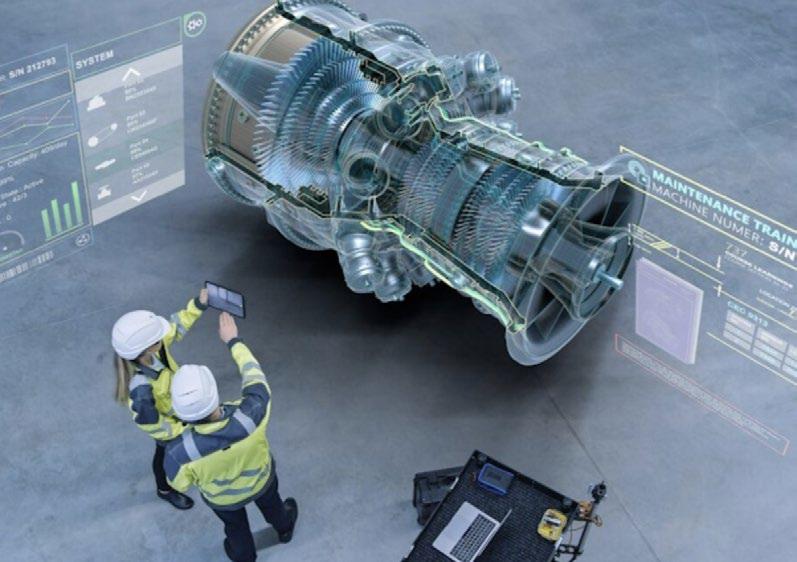
Capture and manipulate every detail with accuracy and precision.
will need to be addressed before the concept of an industrial metaverse becomes mainstream.
Data privacy, for example, is a huge concern for the industrial metaverse. With digital versions of products, processes and facilities, there will be ever greater requirements for cybersecurity. The consequences of a data breach could be devastating. It’s in this transport layer where we might begin to address the issue. Another hurdle is the bandwidth or data transfer rate. If a network is not able to cope with the quantities of data being shared the concept of real-time collaboration very quickly falls apart.
Building on the previous point, Interoperability is the final building block of the industrial metaverse.
go from a purely virtual reality space to one that offers a persistent, always-on, digital representation of the physical world. Any connected device is like a piece of a giant digital mosaic. We only get an accurate image when we connect everything. The more pieces there are, the higher the resolution of the final image.
For more information on Hexagon’s provision in these areas, read about nexus, our digital reality platform for manufacturers
www.hexagonmi.com
Without the ability to connect different systems together, the concept of an industrial metaverse would be so restricted as to be hardly useful at all. Openness is fundamental and an essential prerequisite for manufacturing transformation. An industrial metaverse would be composed of a potentially limitless series of data sources, feeding into the whole. These might come from any number of different or even competing suppliers. Discounting a viable data source would mean missing key information to visualise and use in the industrial metaverse app. That would make the whole thing less accurate or bring about sub-optimal decisions.
Interoperability of equipment and integration of data sources are essential for creating any kind of unified and cohesive industrial metaverse. This connectivity is how we


Ndustrial will enhance ABB’s digital and sustainability portfolios with energy optimization solutions that take into account complete production processes.
Abb announced a minority investment in ndustrial, a u S-based clean technology startup that has developed a leading-edge, AI-powered energy management platform. This innovative technology enables smarter, production-aware energy decisions in real time, helping customers reduce operating costs, optimize energy consumption and accelerate decarbonization. The investment was made through ABB Ventures. Financial details were not disclosed.
The transaction follows ABB taking a minority stake in GridBeyond in April 2024, a start-up providing energy management solutions based on AI and data science that will enable customers to optimize distributed energy resources and industrial loads. ndustrial helps companies measure and reduce their energy intensity – the energy required for a pre-defined unit of output or activity. By integrating multiple, and often disparate, data sources such as weather, market rates, equipment performance, industrial process outputs and more, companies can analyze, optimize and predict their energy usage and costs per unit of production.
This enables real-time decisions, as well as actionable insights and automated control specific to the industry, facility or production line being optimized. “Championing sustainability and guiding customers to achieve net zero carbon is at the core of what we do,” said Stuart Thompson, President, ABB electrification Service. “Through our Advisory Services we are building an ecosystem of innovative, nimble partners to co-develop advancements in digital solutions to complement our portfolio and enhance the availability, resilience, safety and sustainability of energy for customers.
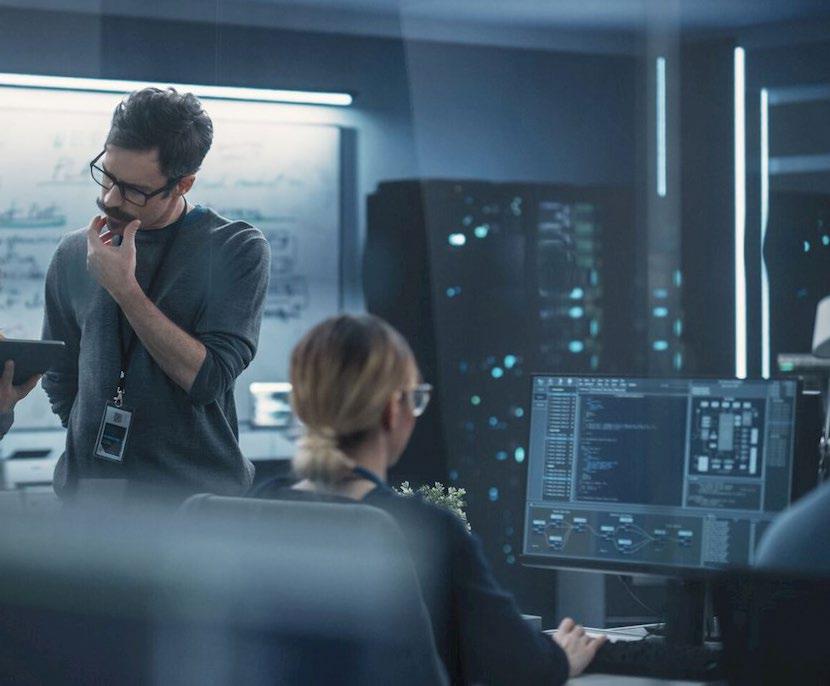
This partnership with ndustrial means we can accelerate decarbonization for our customers by leveraging AIpowered predictions to make decisions in real-time so they can optimize production, save energy, and reduce costs and emissions. Investment complements ABB’s service offering with AI-powered predictive energy management solutions that reduce energy and carbon intensity and enable more sustainable operations. Together with recent investment in GridBeyond, the transaction will further strengthen ABB electrification’s innovation ecosystem.
Twice named as one of the World’s Top 100 energy & Climate Tech startups by Start up energy Transition powered by the German energy Agency in cooperation with the World energy Council, ndustrial’s vision complements ABB’s drive to enable the energy transformation and decarbonization of industry. The company has around 40 employees. ndustrial’s Co-Founder and Chief Technology Officer John Crawford said: “In a world preoccupied with AI that often delivers nebulous benefits, ndustrial stands out for our decade of experience quantifying impressive payoffs from machine learning optimizations.
Our team of industrial engineers and software developers have created a new kind of energy management system for industrial operations, and with ABB’s expertise and global reach, we’ll be able to make a real impact in accelerating the global energy transition. We are all extremely excited to see how far and how fast we can go.” To date, ndustrial
has helped companies avoid over $100 million in energy costs over 10 years. Lineage, a global cold storage leader, saw a 30 percent reduction in both energy costs and energy intensity, over seven years, equivalent to powering 250,000 homes annually.
Mads Moeller, Head of ABB e lectrification Ventures, said, “ndustrial’s track record, technology platform, and experienced team make them stand out. Our investment reflects ABB’s commitment to innovative companies driving industrial electrification and energy savings for customers.”
www.abb.com

The sorting and demolition grapple range consists of 10 models.
Komatsu Europe is pleased to introduce the all-new sorting and demolition grapple range, the latest addition to the Komatsu attachments portfolio.
The new grapple range meets the customer’s needs and the highest safety standards, with all grapples coming as standard with a load control valve included. The main areas of focus were on low maintenance cost and a long lifetime of the attachments. This was achieved using oversized pins and bushings, a robust double-walled main frame and perforated Hardox shells.
“We can cover a wide range of crawler and wheeled excavators, going from 2,5 to 70 tonnes machine class” says Bastiaan Cassiman, Product Manager Attachments. “Their heavy-duty design ensures that they hold up in even the toughest conditions.” He concludes: “These grapples are designed to handle anything from primary and secondary demolition to recycling”.
These sorting and demolition grapples are the first of a complete range of demolition attachments which Komatsu will continue to introduce.
Key Sales Features
• Integrated mechanical end stops to protect the cylinder.
• Perforated Hardox shells as standard.
• Reversible Hardox 500 cutting edges with recessed bolts and nuts.
• Integrated load control valve.
• Double-walled, closed high strength frame.
• Oversized pins and bushings.
• Oversized slewing ring with internally mounted hydraulic motor(s).
• From the JRSG290-1 up, all models are equipped with dual rotation motors.
www.komatsu.eu
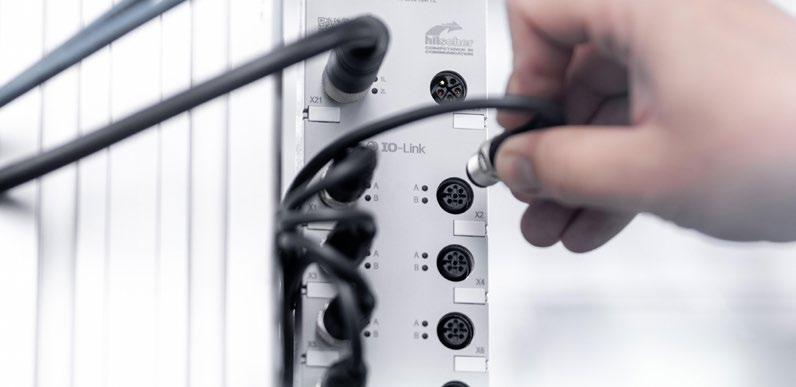
Hilscher, a global leader in innovative industrial communication products and services, is pleased to introduce two new Edge IO-Link masters to help customers modernize their machines and plants through instant IO-Link machine monitoring. The new devices can connect directly to Ethernet-based IT infrastructures without the need to interface with existing communication networks and their control systems.
The new Edge IO-Link masters come in two versions:
• sensoreDGe. Based on a central platform, this complete system allows you to remotely monitor up to eight IO-Link sensors. Requiring only a power supply and an internet connection, the sensoreDGe box transmits data into the cloud at one-second intervals for direct analysis.
• sensoreDGe FIeLD. Featuring two container engines and optional cloud support, sensor e DG e FI e LD connects up to eight local IO-Link sensors and includes an open computing platform for your own software with centralized management.
sensoreDGe devices combine computing power and IO-Link master technology in one IP67-rated housing. In addition, Hilscher’s centralized edge management platform allows users to manage the new devices easily either locally or via the internet.
For more information about Hilscher sensoreDGe IO-Link masters, visit www.hilscher.com
Following news of rising energy costs caused by French grid limitations, an energy solutions provider is urging energy intensive industries in the region to consider moving to decentralised models to mitigate rising costs and resilience issues.
The call comes as the French power-grid operator RTe reports that capacity for transmitting electricity to Belgium, Germany, Switzerland and Italy has been reduced since early March. As wholesale electricity prices in these regions increase as a result, energy intensive industries across these countries may not only be experiencing rising operational costs, but also risk reduced resilience on site.
With the renewable energy transition set to put further strain on electricity grids across europe, energy intensive industries could improve resilience, better manage operational costs and continue make sustainability progress through temporary decentralised solutions, as Chris Rason, Managing Director of Aggreko energy Services, explains.
Rason says: “The continued volatility of the energy market across europe poses a significant challenge to organisations. energy intensive industries such as manufacturing, data centres and the chemicals industry are facing rising costs and resilience issues on their sites which must be carefully balanced with their sustainability progress and decarbonisation.
“With grid supply and cost set to continue to fluctuate across the region as more intermittent renewable production grows, it is time for organisations to consider decentralised solutions to mitigate cost, bolster resilience and continue decarbonising.”
Aggreko outlined how companies can mitigate grid disruption and safeguard their power provision in its report, Race to Resilience. Identifying tools that can help stakeholders to guarantee long-term energy security on site, the document also explores how its portfolio of Greener upgrades® solutions can provide onsite resilience, while reducing emissions and operational costs.
Supporting the european energy transition by making new technologies more widely available to customers forms a key part of Aggreko’s sustainability framework, energising Change™. Through its Greener upgrades® portfolio, the company is able to ensure customers can prioritise energy resilience onsite, maintain control of operational costs and continue to prioritise their sustainability goals.
Rason adds: “Having invested heavily in our fleet of solutions, Aggreko remains committed to supporting industries across europe through the energy transition. While economic conditions may prevent capital investment in permanent expenditure, we are able to support these companies with implementing a decentralised solution on site through temporary solutions. As the grid is improved and renewable production is developed further across the continent, adopting a decentralised approach will best place companies to prioritise their sustainability goals.”
www.aggreko.com
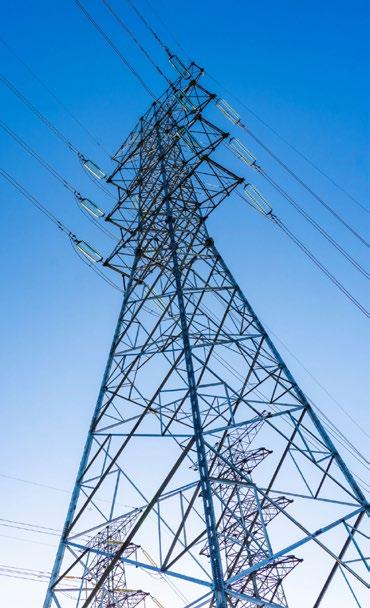

VolkerRail is back in Sheffield to undertake rail replacement works on the Supertram network.
The South Yorkshire Mayoral Combined Authority appointed VolkerRail to renew areas of track on one of the region’s best-loved modes of transport to extend the lifespan of the network, improve comfort, and reduce noise where tracks are worn. This ongoing maintenance program is critical to providing passengers with a better travel experience and lowering the risk of network closures on safety grounds.
Close to 2,000 meters of track will be replaced in 2024, across three phases, with 200 meters to be replaced in May. Work will be undertaken at key points across the summer and, wherever possible, will coincide with school holidays to minimize disruption.
The first phase will see VolkerRail replace the track crossing units at Cathedral tram stop. Work will begin on Friday, 24 May through Monday, 3 June, with overnight preparatory works commencing on Sunday, 19 May, around the Cathedral and Fitzalan Square tram stops.
Melanie Corcoran, executive director of transport at SYMCA, said these essential works are vital to extend the lifespan of the Supertram network. every effort is being made to minimize the impact and keep people moving while this work progresses. By replacing the track, the region’s tram network can continue to safely provide its popular service for generations to come.
VolkerRail’s metro and rail projects general manager, Sam Allen, said they are delighted to be back to continue their efforts in extending the life of the network. With over a decade of experience on the Supertram network, their teams will work around the clock to complete renewals as efficiently as possible, using the most effective methods to minimize disruption and noise. Local residents and passengers are thanked in advance for their understanding and patience.
To allow these essential engineering works to take place in the city centre, between Cathedral and the junction above Park Square roundabout, tram and Tram Train services will be subject to alteration from Saturday 25 May until start of service on Monday 3 June. West Street, City Hall, Cathedral, Castle Square and Fitzalan Square tram stops will not be served for the duration of the works. Throughout each phase, the Supertram network will run a revised timetable and services, and customers can view the revised timetables via the Travel South Yorkshire Timetable Finder
www.volkerrail.com

The offshore converter station for ScottishPower Renewables’ biggest-ever windfarm – East Anglia THREE – has taken to the water for the first time as it heads to Norway to complete construction.
Currently weighing in at several thousand tonnes, the seven-storey structure which is more than 68 metres long, 34 metres wide and 44 metres high – sailed out from the Damen yard in Mangalia, Romania onboard the heavy transport vessel, Bigroll Beaufort, on Thursday 25 April.
It’s travelling more than 3,800 nautical miles to Aker Solutions’ fabrication yard in Stord, norway where the HVDC equipment will be installed and commissioned in another first for ScottishPower Renewables.
The massive structure which will then weigh almost 10,000 tonnes – will be transported and installed in the southern north Sea next year ahead of the windfarm’s completion in 2026. Once operational, east Anglia THRee will be the second largest windfarm in the world, producing 1.4 GW of clean, green electricity – enough to power the equivalent of more than 1.3 million homes.
Pedro Fernandez, ScottishPower Renewables’ east Anglia THRee Project Director said: “This is a major milestone and memorable moment in our journey towards a cleaner and greener future. It was such an impressive sight to see the converter station – the biggest ever constructed across the whole of the Iberdrola Group – set sail.
“Getting to this point is testament to a massive team effort from ScottishPower Renewables, Aker Solutions, Damen, Mammoet, Roll Group, Bring, DnV, ABL and Bureau Veritas and that great teamwork will continue as we move to the next phase of construction.”
“east Anglia THRee is a frontrunner project for the energy transition in Aker Solutions”, said Aker Solutions Project Director, Hege Skram. “The topside sail away from Damen is an important project milestone and is the result of great teamwork and collaboration between all stakeholders. I’m humble and proud to be part of such an excellent project team.”
Arne engevik, SVP Renewable Projects Aker Solutions. Added: “east Anglia THRee’s sail away is an important milestone, and great collaboration and teamwork between all stakeholders is the key to this success. As we reflect on this achievement and follow the voyage towards Stord yard in norway, we remain dedicated to upholding the highest standards of safety and quality going forward with this exciting project together. By combining our strengths, we can overcome challenges. I would like to thank everyone who has contributed and ensured this success.”
www.scottishpowerrenewables.com

TETRA or P25 legacy narrowband technologies no longer meet the connectivity needs of today’s first responders. As mission-critical network requirements grow, broadband connectivity is the answer.
Proper device and mobile network testing eases the migration to 3GPP-compliant broadband missioncritical services (MCX). At Critical Communications World 2024 (CCW 2024) in Dubai, Rohde & Schwarz will demonstrate its integrated solutions that enable reliable operation of mission-critical devices, networks and services. Solutions that enhance situational awareness for law enforcement and protection round out the exhibited portfolio.
When lives are at stake, reliable communications are vital to emergency services. While voice applications are still the top priority for first responders, data and video-based missioncritical applications are becoming increasingly important in crisis situations and for efficient day-to-day operations. Public safety and government agencies around the world are migrating their various communications networks from narrowband land mobile radio (LMR) like TeTRA or P25 to broadband networks that meet this new need not only for voice but also for high-speed data services.
This migration to either 3GPP-compliant isolated secure networks or commercial 4G/5G-based cellular networks with embedded mission-critical capabilities must be planned and executed very carefully in order to maintain existing narrowband capabilities. narrowband networks will still be in use in parallel for another decade, providing features such as push-to-talk (PTT) to their users. The 3GPPdefined internal architecture for MCX services includes amongst others user/group management, policy and charging enforcement, signaling control, and cross-network interworking. Applying appropriate and advanced test and measurement techniques during this ongoing migration process is essential to ensure reliable operation of critical communications for first responders and to save lives in crisis scenarios.
As an established partner of the critical communications ecosystem, Rohde & Schwarz is showcasing its comprehensive range of test solutions for MCX at Critical Communications World 2024, taking place from May 14 to 16 at the Dubai World Trade Centre in Dubai, uAe. At booth M20, visitors can learn from Rohde & Schwarz experts about the full range of test solutions, extending from R&D and conformance testing of end devices to network testing including MCX application verification. Solutions for spectrum monitoring and network protection complete the exhibited portfolio, all aimed at ensuring the reliable operation of mission-critical networks and services.
Rohde & Schwarz is bringing its extensive expertise in 3GPP conformance testing to the world of critical communications, demonstrating at CCW 2024 for the first time its industry-leading 3GPP MCX device conformance test suite on the R&S CMX500 4G/5G one-box tester. The test suite includes comprehensive 3GPP RF, functional, protocol and application tests for rugged MCX devices. In addition, the R&S CMA180 radio test set for testing PMR (public mobile radio) and LMR (land mobile radio) devices will be on display, highlighting the company’s cutting-edge solutions for device R&D and conformance validation for MCX device manufacturers.
As an expert in mobile network testing, Rohde & Schwarz will also present its know-how in active and passive mobile network testing methods and solutions that cover the entire MCX network lifecycle, from coverage and interference measurements to specific MCX service testing like MCPTT and MCVideo quality. Visitors will be able to experience a unique MCX smartphone-based test solution implemented on the QualiPoc. This solution can be used in any MCX environment to assess the performance of MCX private and group calls, including measurement of 3GPP-specified MCX KPIs. Another test solution based on the R&S ROMeS4 drive test software and the R&S TSMA6B mobile network scanner provides a universal tool for network engineering and optimization.
The Rohde & Schwarz portfolio also includes efficient solutions for stationary, transportable and portable spectrum monitoring systems that provide comprehensive spectrum awareness. At CCW 2024, Rohde & Schwarz will

be exhibiting the R&S PR200, a tried-and-tested portable monitoring receiver for interference hunting in and around specific areas and facilities. It is an indispensable tool for regulatory authorities, mobile network operators, police forces, military units and other security organizations.
Cellular network analysis
R&S neSTOR is a turnkey mobile communications solution for situational awareness, law enforcement and protection of critical infrastructure. It is a software platform used in conjunction with R&S TSMA6B mobile network scanners and QualiPoc smartphones to analyze cellular networks via the air interface. Public authorities and security organizations, for example, use it to detect, identify, locate and analyze deployed cellular technologies and occupied bands and channels.
Rohde & Schwarz will present its comprehensive portfolio of solutions for mission-critical communications at Critical Communications World 2024 at the Dubai World Trade Centre from May 14 to 16, 2024, at booth M20. In addition, Rohde & Schwarz experts will share their insights at the Focus Forum on testing and certification of broadband devices on May 15, 2024 from 11:30 a.m. to 1:00 p.m.
www.rohde-schwarz.com
igus® has announced the winners of its 2024 vector awards, a biennial competition that honors bold, exciting projects that incorporate igus e-chain® cable carriers made of highperformance plastics. A U.S. company, TDK RF Solutions, took the silver vector award for its automotive test rig.
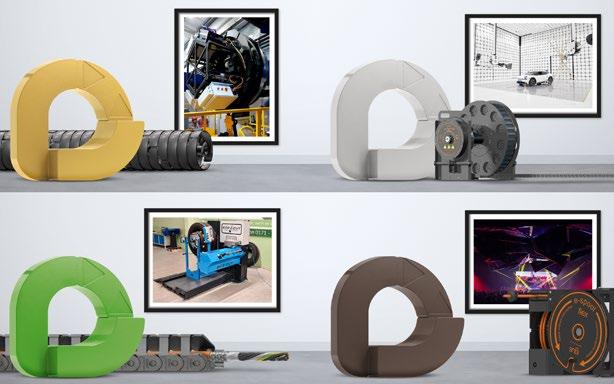
The winners of the igus 9th vector award: gold goes to the spectrograph from the Institute of Astrophysics and Space Sciences at the University of Lisbon (Portugal); silver to the TDK RF Solutions (USA) automotive test rig; and bronze to MECAoctet for its movable nightclub ceiling (France). The green vector goes to Bear Machines GmbH (Germany) for a machine that automatically recuts tires. (Source: igus GmbH)
The winners — selected from 328 applications from 37 countries — were decided by a panel of research, press and industry experts. igus awarded the gold vector to the university of Lisbon’s Institute of Astrophysics and Space Sciences, where researchers developed a spectrograph with a moon-sized field of view and ability to simultaneously observe over 1,000 objects in the visible and near-infrared wavelengths. The spectrograph incorporates igus triflex® series energy chains, ensuring reliable operation even at an altitude of 2,670 meters.
The silver vector was awarded to u.S. company TDK RF Solutions for its vehicle-in-the-loop (VIL) test rig for driver assistance technologies. The rig includes a turntable, surrounded by antennas that expose the vehicle to high electric fields. To guide the control cables and compressed air hoses along the system’s five axes, engineers used igus 1400 series energy chains, which they wound into spring cable reels from the igus e-spool® series.
Additional winners include French company MeCAoctet, which received the bronze vector for its movable nightclub ceiling with igus e-spool® products, as well as Bear Machines GmbH, which received the green vector for its environmentally-friendly vehicle tire recutting machine, which includes chainflex® cables and e2 e-chain® cable carriers.
www.igus.com
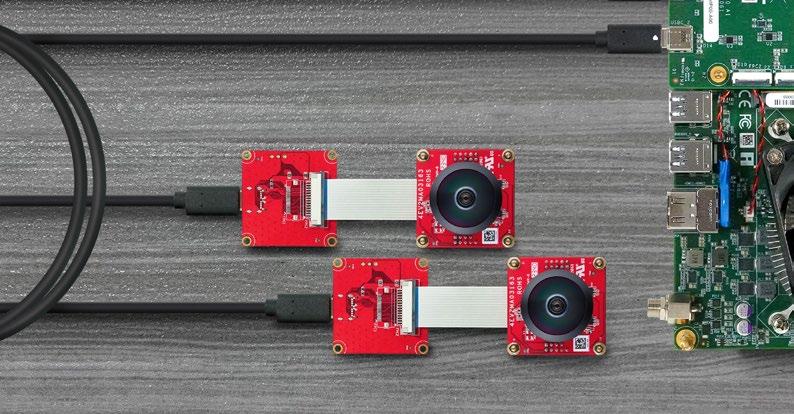
Innodisk announces the launch of its industry’s first MIPI over Type-C solution. This exclusive technology overcomes traditional MIPI cable length limitations, allowing embedded camera modules to be positioned farther from the system.
This expands the possibilities for visual AI applications, particularly in smart manufacturing and smart cities, enabling the seamless integration of high-quality vision systems into these evolving environments.
The increasing popularity of vision-based applications across industries highlights the critical need for high-quality, reliable camera solutions. As computer vision becomes a cornerstone of AI development, the demand for industrialgrade cameras continues to surge. Innodisk recognizes this need and has developed the MIPI over Type-C Solution to address the challenges faced by vision system integrators and developers.
Innodisk’s MIPI over Type-C technology extends the connection distance to 2 meters or more, surpassing the previous 30 cm cable length limitation while maintaining high performance. It enables seamless conversion to a custom uSB Type-C interface through a tailor-made adapter board and offers cost-effectiveness compared to SerDes solutions. Additionally, this solution boasts successful deployments on n VIDIA Jetson, Intel x86, and ARM platforms, with Innodisk actively investing in R&D to ensure ongoing compatibility across various platforms, accelerating the deployment of edge AI applications for clients.
Innodisk’s MIPI over Type-C camera module solutions are extensively used in various smart applications. They are revolutionizing industries like smart manufacturing, where AMRs and forklifts benefit from high-quality imaging and extended reach. Similarly, shared mobility applications such as shared bikes leverage these modules for enhanced safety and efficiency. By offering a combination of high bandwidth and longer range, Innodisk’s solution removes cable length limitations, unlocking a wave of new possibilities for smart applications.
Innodisk’s MIPI over Type-C solution marks a significant leap forward, building upon its diverse MIPI camera module portfolio and seamless platform integration. This includes compatibility with nVIDIA Jetson, Intel 12th to 13th Gen, Core ultra processor, AMD Xilinx, and nXP. As the sole Intel-certified MIPI Camera partner in Taiwan, Innodisk collaborates closely with IPC manufacturers, possessing professional integration capabilities to offer comprehensive support and services to customers. The MIPI over Type-C Solution is poised to redefine the future of vision technology, offering performance, flexibility, and affordability.
www.innodisk.com

Thanks to an adjustable sound cone and small dead zone, the new Leuze ultrasonic sensors of the 420B and 412B series can be used for many different applications.
If you’re looking to reduce the number of different sensors used in your systems, the 420B and 412B series from Leuze are the right choice: The new ultrasonic sensors are available with adjustable sound cone and as switching (HTu) or measuring (DMu) sensors – this allows extremely flexible application. The sound cone can be set via an IO-Link interface to the three ranges “narrow”, “medium” or “wide” and thus adapted to the respective application.
As a result, the ultrasonic sensors operate with maximum precision: They are able to detect reliably in situations where optical sensors are pushed to their limits. They also detect glossy, reflective, very dark or transparent surfaces as well as liquids without problem. The 420B series includes ultrasonic sensors in compact cubic plastic housings. It replaces the 420 series.
With the new devices, users benefit from smaller dead zones with the same or a higher sensor operating range. The 412B series complements the range of cylindrical sensors in M12 housing with devices featuring IO-Link and analog output.
Thanks to their adjustable sound cone, IO-Link interface and two switching outputs, the HTu420B ultrasonic sensors in the red housing are suitable for challenging detection tasks. For example, two fill levels can be detected or two positions can be monitored simultaneously. The adjustable sound cone turns the sensors into flexible all-rounders. A narrow sound cone, for example, is suitable for detecting a fill level through small container openings. In its wide setting, the sound cone in turn captures larger areas – ideal in the case of bulk material or diffusely reflective objects with complex surface or structure. Practical: An interruption filter detects brief changes in measurement within a certain interval

caused by interfering objects (e.g. an agitator). The sensor suppresses these interfering signals via the IO-Link interface, thereby ensuring a seamless production process.
For the precise measurement of distances
Moreover, to measure distances, system operators can make use of the DMu420B and DMu412B ultrasonic distance sensors. The devices have an analog output (either current or voltage), an IO-Link interface as well as an adjustable sound cone.
The Sensor People from Leuze also offer the HTu420B ultrasonic sensors in a standard design with black plastic housing. As an economical solution with one switching output (push-pull), they are suitable for simple detection tasks. Both variants are available in the operating ranges from 10 to 250 millimeters, 15 to 500 millimeters as well as 20 to 1000 millimeters. The HTu412B series has an operating range of 15 to 500 millimeters.
The cubic sensors measuring 20.5 x 41.0 x 15.0 millimeters are extremely compact. The cylindrical sensors of the HTu412B series too are just 50 millimeters long. They are therefore also particularly suitable for applications in constrained spaces. All types can be parameterized quickly: easy setup and operation is possible using the teach button, via the teach input or via IO-Link.
www.leuze.com
The ultrasonic sensors of the 420B series have an adjustable sound cone. A narrow, medium or wide sound cone can be selected depending on the application. This allows, for example, fill levels to be monitored through differently sized container openings
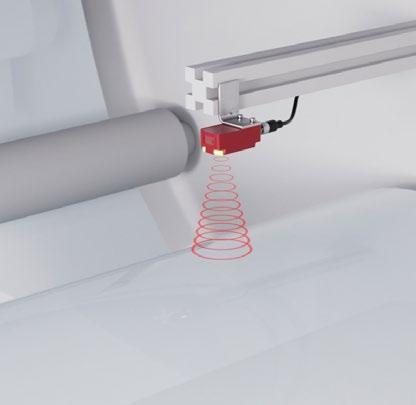
The DMU420B ultrasonic distance sensors continuously deliver an analog output signal (either current or voltage) to the machine control. This allows system operators to monitor e.g. roll diameters to ensure that the rolls are changed in a timely manner. The glossy surface is detected reliably
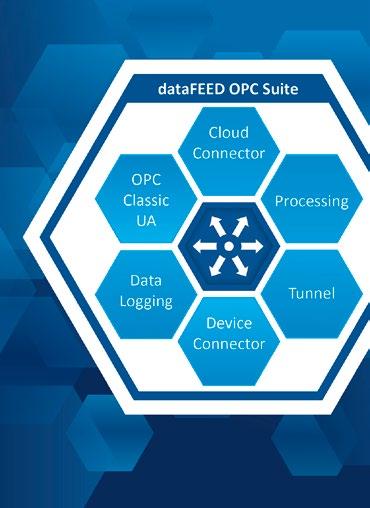
Softing Industrial Automation announces the release of the latest version V5.35 of dataFEED OPC Suite which offers comprehensive support for SINUMERIK 840D CNC machines as well as the integration of web services.
The dataFeeD OPC Suite combines software solutions for OPC unified Architecture (OPC uA) and OPC Classic communication as well as IoT cloud connection in a single product. With the new SInuMeRIC 840D support in the dataFeeD OPC Suite V5.35, users can read out all process parameters from the numerical Control (nC) part, the Programmable Logic Controller (PLC) part, and the drive data of the machines without having to interfere with the machine configuration.
Another new feature of version 5.35 is the web services functionality, which enables direct access to production data via web client applications such as Web Browser, Postman, or Client for uRL (cuRL) and its integration into IT solutions.
The features of the new dataFEED OPC Suite V5.35 in detail:
• Full support for SINUMERIK 840D Computerized Numerical Control (CNC) machines:
The dataFeeD OPC Suite can be used to read axis, tool, and program data as well as alarms from the nC section. Status, program sections, and alarms can be read from the PLC section. It is also possible to read out the drive data. Data is recorded without affecting the machine configuration.
• Integration with SIMATIC Siemens S7-300:
The suite offers a seamless connection to the integrated SIMATIC Siemens S7-300 for comprehensive control and monitoring.


• Versatile application possibilities of the dataFEED OPC Server CNC:
The server can be used as an OPC Classic Server or OPC uA Server and enables the seamless integration of Siemens SInuMeRIK CnC controllers into modern Industry 4.0 solutions.
• Provision of production data:
The suite enables the provision of production data via the Message Queuing Telemetry Transport (MQTT) or Representational State Transfer (ReST) protocols and their transfer to IoT Cloud or Big Data applications on platforms such as Microsoft Azure, Amazon AWS and Siemens MindSphere. The data is subsequently available for various applications such as condition monitoring, predictive maintenance and evaluation.
• Integration of production data in IT solutions via web services
“The new support for SInuMeRIK 840D CnC machines and the web services feature add two important features to our dataFeeD OPC Suite. We see great potential to make the suite accessible to a wider range of users, especially concerning the support of SInuMeRIK 840D,” explains Andreas Röck, Product Manager at Softing Industrial Automation. “With this development, we have reached another milestone in fulfilling our claim of providing an all-in-one solution for secure and robust OPC communication and IoT cloud integration.”
www.softing.com

The HARTING Technology Group showcased connection technology for fuel cells and hydrogen production, along with AI-assisted connector development, promoting the All Electric Society, a green future where all energy comes from renewable sources.
“ energizing a Sustainable Industry” – This is the banner under which the 2024 HAnnOVeR TRADe FAIR opened its doors from 22 – 26, April. On the press highlight tour, interested journalists were given an advance opportunity to find out about the most innovative technologies at the world’s leading industrial trade fair.
Connection technology for fuel cells norway is the partner country for this year’s HAnnOVeR TRADe FAIR. In keeping with the themes and topics, HARTInG presented a project during the press highlight tour which was created in collaboration with the norwegian company TeCO 2030: a fuel cell in which hydrogen is converted into energy. The Technology Group is supplying the connection technology. Besides the Han-Modular®, a pair of M12/ RJ45 connectors is installed in the transducer in order to guarantee the safe transmission of data and energy. With technologies such as these, HARTInG is playing an active role in implementing the All electric Society.
AI-assisted connector development
At the same time, HARTI n G is showingcasing the AIassisted development of connectors. Together with partners Microsoft and Siemens, the Technology Group is demonstrating how Artificial Intelligence is able to revolutionize the application-based development of industrial products: natural language inputs are interpreted by highly sophisticated Microsoft recognition algorithms and contextual understanding in order to adapt AI products to specific requirements with the aid of HARTInG connectors and create 3D models for CAD software (Siemens). This speeds up development processes, facilitating connectivity solutions ideally adapted to the applications, while ensuring the most sparing deployment of resources.
www.harting.com

NGK INSULATORS has received an order from BASF Stationary Energy Storage GmbH for NAS Batteries for a large-scale green hydrogen production project, developed by HH2E, a German green hydrogen producer.
The nAS batteries that have been ordered have a maximum output of 18 megawatts and a capacity of 104.4megawatt-hours (72 container-type nAS batteries). They are part of the large-scale project for green hydrogen* production currently under development on the Baltic Sea shore in the north of Germany. The current order is the first delivery batch of the nAS batteries with total capacity of more than 230 megawatt-hours reserved by HH2e for this project. negotiations for next deliveries are also underway.
The nAS batteries will be charged with electricity from intermittent renewable energy sources, such as solar and wind power, and will supply power to the electrolyzer for the green hydrogen production process, ensuring efficient utilization of renewable energies and stable green hydrogen production. nAS batteries, capable of high-capacity and long-duration discharge, are well-suited for shifting peak loads over an extended period using electricity derived from renewable energy sources.
The nAS batteries’ track record, safety and high reliability as energy storage technology have been highly evaluated, leading to their adoption in this project. This is the first commercial adoption of nAS batteries for green hydrogen production projects.
efforts by countries and companies around the world to decarbonize their business activities and achieve carbon neutrality by 2050 are accelerating. Germany, a leading country in renewable energy, aims to become a global leader in hydrogen technologies and has set a target of achieving 10 GW of hydrogen production capacity by 2030.
www.ngk-insulators.com
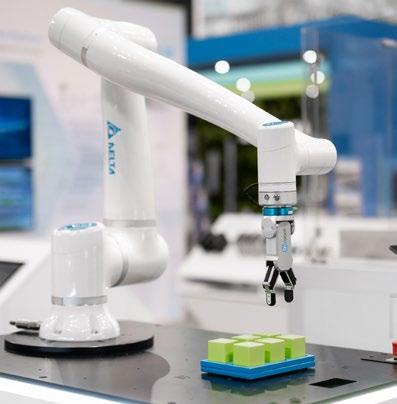
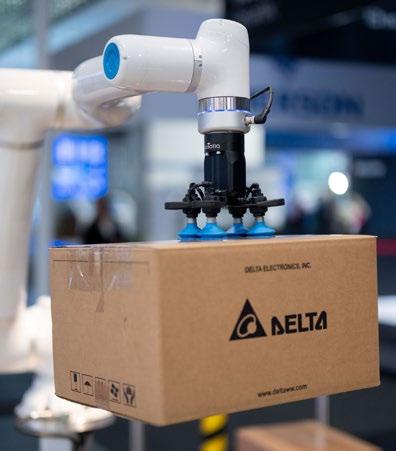
Delta presented, under the theme “Realizing an Intelligent, Sustainable and Connecting World,” its unique capabilities to foster smart manufacturing and sustainable cities at Hannover Messe 2024.
The showcase features a new generation of collaboration robots (cobots) for smart factory automation applications, and a new 500kW DC ultrafast charger for traditional and heavy-duty electric vehicles (eV).
At the press conference, Dalip Sharma, President and General Manager of Delta electronics eMeA Region, said, “Delta’s dedication to sustainability is intricately woven into our innovative solutions and business model, mirroring europe’s net-zero endeavours. Moreover, our proactive sustainability measures, such as our Internal Carbon Pricing system, have been crucial for Delta’s factories, R&D centres, and offices in eMeA to achieve Re100 in 2023. We are also proud to demonstrate our new factory digital twin, developed on the nVIDIA OmniverseTM platform, for our smart production demo lines.”
Across the approximately 400-square-meter Delta booth, visitors engaged on a journey into the world of intelligent infrastructure across three sectors: Intelligent Industry, Smart energy Infrastructure, and ICT Infrastructure.
Michael Mayer-Rosa, Senior Director, Industrial Automation Business Group at Delta electronics eMeA Region, said, “Leveraging our deep-rooted expertise in machine, process, and factory automation, we’re honoured to unveil Delta’s D-Bot series cobots at Hannover Messe 2024.” Delta’s cobots are engineered for swift deployment and straightforward operation, offering plug-and-play functionality alongside intuitive programming. This innovation significantly bolsters Delta’s capabilities in smart factory automation, directly catering to the industry’s urgent requirements for adaptability and efficiency.
Furthermore, the cobot portfolio boasts payload capacities up to 30 kg, reach spans as long as 1800 mm, and compatibility with etherCAT, CODeSYS, and Modbus to ensure optimal levels of precision, in applications such as pick & place, palletizing, and welding.

Just last month, Delta joined nVIDIA GTC, a global AI conference. With a digital twin developed on n VIDIA Omniverse, Delta simplified the simulation process of tray and object detection on a demo robotic line by consolidating the 3D data of diverse equipment. The result on the demo line was an increase in the synthetic data generation capabilities. The solution saves time to plan and optimize factory operations before actual production starts.
Delta supports the world’s current energy transition with its comprehensive Smart energy Infrastructure solutions, including PV inverters, energy storage systems, a variety of AC and DC eV chargers, and an advanced eV Charging Management System. At Hannover Messe, the Company is demonstrating a fast-charging station application, including the brand new 500kW DC heavy-duty eV charger, the uFC 500, designed for fleet and public charging, and the DeltaGrid® eVM. This integration, complemented by Delta’s smart energy solutions, illustrates the Company’s commitment to alleviating grid stress from the fast-growing demand for fast eV charging.
At Hannover, Delta also showcased its readiness to be the partner in establishing a solid information & communications infrastructure, featuring complete ICT solutions, from prefabricated to edge data centres, and 5G
telecommunication infrastructure, all designed for optimal efficiency, reliability, and scalability. These solutions are enabling higher energy efficiency and productivity in critical applications in the era of IIoT and digital transformation.
www.deltaww.com

At Hannover Messe, Schneider Electric outlined how software-defined automation is driving industrial growth.
Schneider electric showcased the latest innovations in its portfolio, including industrial software, Artificial Intelligence and Digital Twin technology. These solutions were demonstrated through the lens of a digital and sustainable life science campus, highlighting Schneider’s deep domain expertise across the entire industrial value chain.
New industrial innovations showcased at Schneider Electric’s booth
• COnneCT: This agnostic, end-to-end industrial intelligence platform from AVeVA enables visibility and integration of engineering and operational data across the entire value chain, building an ecosystem of employees, partners and even customers. enriched with AI and founded on the intelligent digital twin, COnneCT empowers businesses to unlock efficiencies and drive sustainability using Schneider electric, AVeVA, etap, RIB and other third-party software providers.
• ecoStruxure Plant Apps: ecoStuxure Plant Predictive energy the latest of Schneider’s Industrial IoT software solutions, running on COnneCT Data Services, monitors energy consumption anomalies across multiple sites to enable better decision-making and significant energy savings.
• ecoStruxure edge Apps: an open, scalable, and readyto-use ecosystem that leverages edge compute and AI technology, provides real-time data processing by converting data into actionable insights at the source - machine, line, or plant-floor level. The first Apps to be launched and demonstrated at HM include ecoStruxure edge Apps Manager, Condition-Based Maintenance, and Autonomous Yield Optimization.
• Hybrid Cloud MeS: AVeVA’s MeS takes a new dimension with applications adopting CO nne CT and gaining new capabilities: Data management, Visualization, and Advanced analytics.
• evoPacT™ HVX: a new circuit breaker for medium-voltage power distribution with an operational lifespan up to three-times longer than today’s circuit breakers. With comprehensive health monitoring and IoT-enabled features, it helps users and partners make a sustainability impact and meet the needs of an all-digital, all-electric world.
• MasterPacT MTZ Active: the latest addition to this comprehensive range of high-power air circuit breakers leverages the advanced digital features of its MicroLogic X control unit for maximum maintenance and energy efficiencies.
• Lexium SCARA Robot: A new ultra-compact, high-speed industrial robot with high positioning accuracies for improving productivity and efficiency in manufacturing

and assembly processes. It seamlessly integrates into unified machine control systems, enabling centralized control of multiple robots to foster synchronization and provide collaborative data flows, addressing the demands of smarter, more flexible, and sustainable manufacturing.
• Automation application copilot: Leveraging the power of Gen AI to boost engineering productivity, this application offers a highly assisted user experience to a control engineer for total application generation workflow tasks including application structure, asset creation from associated libraries and code/documentation/test case generation.
• TeSys motor control: Celebrating 100 years of innovation, Schneider electric’s world-leading reliable, sustainable, and efficient motor control solutions are connected, integrated and IoT-ready to provide industry 4.0 protection.
Schneider electric in the wider industrial ecosystem: Cocreated innovations
• Automation application copilot for PLC code generation: Designed to help engineers to rapidly write high-quality, tested, and validated code for Programmable Logic controllers (PLCs), this code generation solution combines Schneider’s deep industrial domain expertise with Microsoft’s cutting-edge Generative AI technology. The tool is changing the status quo by automating repetitive tasks and providing intelligent code suggestions to reduce programming time.
• MARGO Initiative under Linux Foundation launch: Schneider electric and AVeVA cemented their founding membership of MARGO at Hannover Messe 2024. This new
open standard initiative for industrial automation edge interoperability aims to accelerate digital transformation and foster increased growth for organizations of all sizes. Hosted by the Joint Development Foundation, as part of the Linux Foundation, this initiative aligns with Schneider’s Open Automation approach.
• Data4industry-X: Trusted data is fundamental to driving collaboration and establishing new industrial models that accelerate transformation. Schneider electric is part of the Data4Industry-X, a Gaia-X Lighthouse project and part of Manufacturing-X initiative, supported by the France 2030 national investment plan and the nextGenerationeu economic recovery program. Data4Industry-X relies on technological and industrial expertise to support industrial digital transformation and capitalize on the high potential of industrial data.
www.se.com

At the Hannover Messe trade fair, Bosch Rexroth along with partner companies will present numerous new products from the fields of factory automation and hydraulics.
At Hannover Messe 2024, Bosch Rexroth will present factory automation and hydraulics solutions which will help companies from a range of sectors to achieve their growth and sustainability targets. For example, the company has developed tailored solutions for an economical hydrogen infrastructure, working together with partner companies from the hydrogen industry. With its new actuators, Bosch Rexroth allows the electrification and digitalization of all safety-relevant movements in water depths of up to 4,000 meters for example for the offshore storage of CO2 or the temporary storage of green hydrogen. But no company can do everything alone nowadays. Open solutions and co-creation are the key here. With its automation system ctrlX AuTOMATIOn and the partner network ctrlX World, Bosch Rexroth shows how maximum openness works in automation.
Efficient compression: Drive solutions for an economical hydrogen infrastructure
At Hannover Messe 2024, Bosch Rexroth will present components and products developed together with manufacturers and operators from europe and the uSA for the economical operation of hydrogen filling stations with short refueling times. Working with Firstelement
Fuel, the market leader for the commercial operation of hydrogen filling stations in the uSA, Bosch Rexroth has for example developed a cryogenic pump that can compress
up to 600 kg of liquid hydrogen per hour. It allows heavy commercial vehicles to be refueled directly within a few minutes. Bosch Rexroth also offers other drive solutions for compressing both gaseous and liquid hydrogen.
H4U software platform: Maximum flexibility thanks to digitalized hydraulics
With the H4u software platform, machine and system manufacturers can implement hydraulic functions easily and independently of hardware. They can use H4u.apps in their familiar engineering tools and can reduce costs and engineering work by implementing the apps on existing control hardware. Bosch Rexroth’s hydraulics know-how integrated into the software platform provides the broadest hydraulics functionality anywhere on the market. At the same time, Bosch Rexroth is continuously developing the functional scope of the software platform with additional H4u.apps.
eLION platform: Bosch Rexroth continues to drive electrification
The eLIOn platform was specially developed for global use in off-highway vehicles and supports the full electrification of mobile machines. eLIOn includes motors and inverters as well as important system components such as DC/DC converters, onboard chargers and high-voltage cables. Bosch Rexroth also provides BODAS software modules and suitable gearboxes as well as hydraulic components
such as axial piston pumps for the entire eLIOn platform. The fully integrated safety functions into all inverters (in accordance with ISO 13849, 25119 and 19014) helps to reduce engineering times. numerous machines equipped with eLIOn are already in use as part of pilot projects.
Simply electric: Actuators reduce the costs of offshore systems
In the offshore storage of CO2 and the temporary storage of green hydrogen, valves regulate the controlled flow of process gases and fluids. newly developed eSeA actuators with a 24 V low- voltage (DC) supply are an economical alternative to conventional capital and energy-intensive hydraulic systems. Bosch Rexroth is now adding the eSeA Push actuator for linear movements and the eSeA Drive for applications with very high torques in excess of 35 knm to its actuator for rotary movements (eSeA Torque), which has won a number of international technology awards. This means that all movements required for valve control can be controlled and executed safely, reliably and fully electrically under water via a standardized interface.
Broad portfolio: Bosch Rexroth offers solutions for the entire value stream in battery production
Bosch Rexroth offers a range of components, modules and systems covering the entire value stream in battery production – from electrode and cell production to battery module and pack assembly and even end-of-line testing and recycling. At Hannover Messe, the company will demonstrate how rapidly deployable linear robots optimize processes in module and pack assembly and disassembly by performing typical tasks such as handling, screwing or dispensing quickly and precisely.
Deep discharging of vehicle batteries: Process now 100 times faster
Local battery recycling and the reuse of raw materials will be important building blocks in creating a circular economy. With its solution kit for diagnosing, discharging and disassembling used vehicle batteries, Bosch Rexroth allows the automation of these process steps on an industrial scale as well as scaling, even with high variance, and offers the possibility of scaling
in view of the increasing demand for battery recycling. Compared to previous methods of discharging with a process time of up to 24 hours, the automated process enables a reduction by factor up to 100 or to less than 15 minutes. At the same time, it provides optimum protection for employees.
Automation system ctrlX AUTOMATION: New solutions and partner companies
The automation system ctrlX Au TOMATIO n provides all hardware and software components for complete automation solutions – from control systems and I/Os to motion, PLC and IoT functions and even drives and motors. It is modular and scalable and can meet the needs of virtually any application on demand. The partner network ctrlX World expands the solution with a wide range of apps and hardware components.
Open to all operating concepts: The linear motion system ctrlX FLOWHS
The linear motion system for transport and positioning ctrlX FLOWHS from Bosch Rexroth is geared to maximum openness and flexibility. It is based on the control system
ctrlX CORe with the operating system ctrlX OS. The solution can easily be expanded via app technology. ctrlX FLOWHS is 100 percent integrated into the automation system ctrlX AuTOMATIOn and benefits from the complete ctrlX OS ecosystem.
Operating system ctrlX OS: New possibilities for embedded computer applications
The Linux-based operating system ctrlX OS is now also available for embedded computer applications from congatec. The collaboration between the two companies opens up new possibilities for users of embedded and edge computing products from congatec. By using ctrlX OS and the associated ecosystem, they also gain access to the entire solution portfolio and numerous apps. They can use both ctrlX OS apps and the apps from the partner network ctrlX World.
Stronger together: Automation needs co-creation
The partner network ctrlX World is growing. It expands the solution with a wide range of apps and hardware components. With the pneumatics specialist SMC Deutschland, the 100th partner company has now joined the ctrlX World. Bosch Rexroth and all partner companies have a common goal: To simplify and improve a wide range of automation processes. The ctrlX World partners Arduino Pro by Arduino s.r.l., GeFAZ mbH, Intel Deutschland GmbH, VMware by Broadcom, VeIL energy BCorp, XITASO GmbH and the ctrlX OS OeM partner Dell Technologies will present their solutions at the Rexroth stand.
CE partners: Certified expertise locally
With local Certified excellence (Ce) partner companies, Bosch Rexroth is expanding its global presence. They complement the Rexroth portfolio for factory automation, hydraulics and mobile working machines with their own solutions and services. The Ce partner network encompasses distribution, service, solution and training partners and is being expanded all the time.
At Hannover Messe 2024, Ce partners will present for example solutions with lightweight robots from Kassow Robots – part of the Bosch Rexroth product portfolio since 2022. The flexible cobots with seven axes make it easy for SM e s to implement robotic applications. H e LD e L e Automation GmbH will present a bin picking cell which allows cost-effective and flexible handling of various components using an industrial cobot. PTS Group GmbH will demonstrate a production process with chain conveyor system, assembly workstation, cobot material feed and hydraulic and pneumatic additional functions, while SYMACOn System + Service GmbH will show its newly developed SSG Lift system solution with a cobot from Kassow Robots and the control system ctrlX CORe from Bosch Rexroth. The Belgian Ce partner company ReM-B Hydraulics will be exhibiting industrial hydraulics from Bosch Rexroth at the trade fair stand.
The hydraulic specialist’s services range from repairs and servicing to the sale of hydraulic components. Since 2023, ReM-B has also been offering repairs and services for linear motion technology components.
www.boschrexroth.com
NORDAC ON/ON+ variable frequency drives deliver intelligent control of conveyor systems with an integrated multi-protocol Ethernet interface to improve efficiency, reduce system variants, and optimize performance.
nORDAC On/On+ decentralized variable frequency drives are the latest electronic control innovations to be produced by global manufacturer, n ORD DRIVeSYSTeMS. These VFDs have been engineered for the specific requirements of horizontal conveyor technology and feature integrated functions to optimize operation performance, an integrated ethernet interface, full Plugand-Play capability, and a compact design.

nORDAC On/On+ variable frequency drives feature three frame sizes and two base versions: a version designed for combination with Ie3 asynchronous motors (nORDAC On) and a version optimized for use withIe5+ synchronous motors (nORDAC On+). Both versions offer compact frame sizes that can be motor- or wall-mounted based on the application and space requirements. The drives can be used over a wide speed range, enabling variant reduction for large intralogistics systems and streamlining operation. nORDAC On supports a power range of 0.50 – 3.00 hp while nORDAC On+ supports 0.50 – 4.00 hp.
As with all nORD variable frequency drives, the nORDAC On/On+ is equipped with a dynamic internal PLC for drive related functions. It can process data from connected sensors and actuators, initiate control sequences, and communicate drive and application data to the control center, networked components, or to cloud storage. For this purpose, the VFDs have an integrated multi-protocol ethernet interface for easy integration into automation systems. Whether for Profinet, etherCAT, or ethernet/IP, the required protocol can be easily set via drive parameters. Firmware updates can also be implemented via ethernet.
In addition to simple configuration, nORDAC On/On+ VFDs offer quick installation and maintenance with full Plug-
NORDAC ON/ON+ variable frequency drives are available in 3 frame sizes for scalable functionality

and-Play functionality. The 24 V DC supply for control and communication is integrated into the 3-phase 400 V supply connected to the drive via a 6-pole connector. A daisy chain connector can also be used to supply power to multiple drives, optimizing cable lengths and significantly reduce wiring efforts.
nORDAC On/On+ VFDs include a variety of integrated functions to improve conveyor efficiency and integrate seamlessly with Industrial Internet of Things (IIoT) environments. These functions include integrated sensors via digital inputs, LeD indicators for quick and simple diagnostics, an energy-saving function for optimized efficiency in partial load operation, and brake management for precise control of an electromagnetic holding brake for wear-free brake actuation. Optional functions such as Safe Torque Off (STO), Safe Stop (SS1-t), and internal braking resistors are also available for configuration.
With their scalable functionality and dynamic control, nORDAC On/On+ variable frequency drives are suitable for a wide range of environments, particularly those in warehousing, post and parcel, airport technology, and other large-scale intralogistics applications.
www.nord.com

Comau expands its commitment to large-scale and cost-effective battery manufacturing solutions by joining yet another important EU project.
• BATTwin seeks to develop a Multi-level Digital Twin platform to reduce defect rates in battery production lines arriving at a zerodefect manufacturing goal
• Comau will leverage its 360° process and advanced digitalization competencies to identify, collect and analyze data parameters to help improve battery cell manufacturing quality
• Comau will also distribute real-time defect data via its proprietary In.Grid IoT platform and develop modeling simulations of the manufacturing plants

Comau has joined yet another important paneuropean energy transformation initiative, in the field of e-Mobility, this time in support of the BATTwin project, in the field of e-Mobility. under the scope of its participation, Comau will work with the project’s partners to identify and define crucial data parameters, hardware, software and digitalization technologies that can be used to meet the goal of zero-defect cell production. After which, the company will leverage its 360° process and advanced digitalization competencies to define and implement a multi-sensor data acquisition and management strategy to improve battery cell manufacturing quality.
Funded by the european Commission within the framework of the Horizon europe research and innovation program, BATTwin, coordinated by Prof. Marcello Colledani, Department of Mechanical engineering, Politecnico di Milano, aims to develop a Multi-level Digital Twin platform that will help reduce defect rates in Lithium-Ion battery production, which the organization expects could reach up to 30% during the ramp-up phase of europe’s new Gigafactories. With the goal of reaching zero-defect manufacturing in european Gigafactories, the digitalized virtual environment will be deployed and tested in-field to validate its flexibility, scalability and overall effectiveness.
under the scope of the project, Comau will leverage its longstanding expertise in digitalization, digital twinning, process simulation and electrification to enable automatic
data acquisition and transmission to a cloud-based virtual environment. The company will also perform Discrete event Simulation (DeS) modeling at a production level and develop a digital twin for the production system design and re-design. This will allow cell manufacturers to optimize their work flow, analyze cycle times, prevent bottlenecks and manage both energy consumption and manufacturing performance at a machine level. Thanks to the continuous information feed to and from the virtual environment, manufacturers can instantly recognize and prevent potential production issues, which will further increase overall quality and cost-effectiveness within the battery cell production process.
“Comau’s electrification strategy is founded upon innovative ideas and the continuous Research & Development of next generation battery technologies, cell formation competencies and alliances with pan-european partners and organizations, such as upcell. This groundbreaking project, which was conceived within the framework of various upcell discussions, aligns perfectly with our futurefocused technology roadmap,” explains Daniela Fontana, Comau’s Battery Innovation Manager.
In addition to its partnership with upcell – european Battery Manufacturing Alliance, an association that promotes the creation of an integrated european value chain for the development and production of electric batteries, Comau’s steadfast dedication to energy transformation solutions is further seen through its active involvement in various industry alliances; among which three of europe’s top battery consortiums: european Battery Alliance (eBA), the Batteries european Partnership Association (BePA) and the european Technology and Innovation Platform (eTIP).
The company also participates in numerous other projects regarding electrification as part of the HORIZOn 2020 and HORIZOn euROPe programs. These include, but are not limited to, SPInMATe, aimed at large-scale manufacturing of next-generation solid-state battery cells and modules, GIGABAT, a collaborative e-Mobility project aimed at strengthening the eu production chain for large-scale cell manufacturing, and FASTeST, which seeks to accelerate the development process of reliable, safer and more durable batteries and Flex-BD, a battery recycling project.
www.comau.com
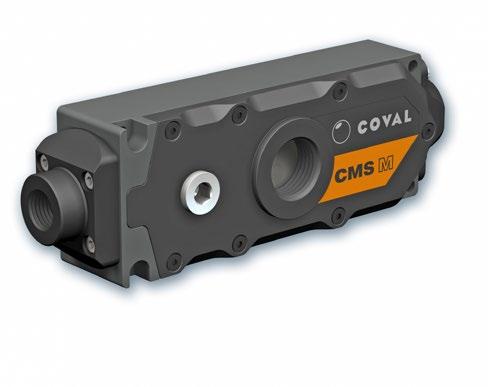

The mini pump with max performance! The CMS M series, the latest addition to COVAL’s range of multistage vacuum pumps, has been designed and developed with two guiding objectives: compactness and performance. It offers an optimum solution for industrial applications which require high suction flow rates.
CMS M multi-stage mini vacuum pumps are the product of COVAL’s advanced research, seeking to provide a powerful, durable solution for handling porous parts, emptying tanks, or random gripping in harsh industrial environments. Thanks to their ultra-compact design and optimized multi-stage Venturi system, these pumps guarantee powerful suction flows of up to 550 nl/min, while reducing compressed air consumption in a compact footprint.
An outstanding feature of the CMS M series is its modularity, making it easy to adapt to a variety of applications and simple to maintain. Available in two suction capacities (300 nl/min and 550 nl/min) and with or without vacuum and blow-off control, these mini pumps also offer two exhaust configurations to perfectly match each specific need.
Advanced multi-stage technology for maximum efficiency
COVAL’s multi-stage technology maximizes the energy input of compressed air by cascading several stages of Venturi profiles and combining their respective suction flows. Intermediate valves progressively isolate each stage to achieve maximum vacuum level. This technology makes it possible to generate high suction flow at low vacuum levels. This innovation reflects COVAL’s commitment to providing efficient, energy-saving solutions for industry.
www.coval-international.com
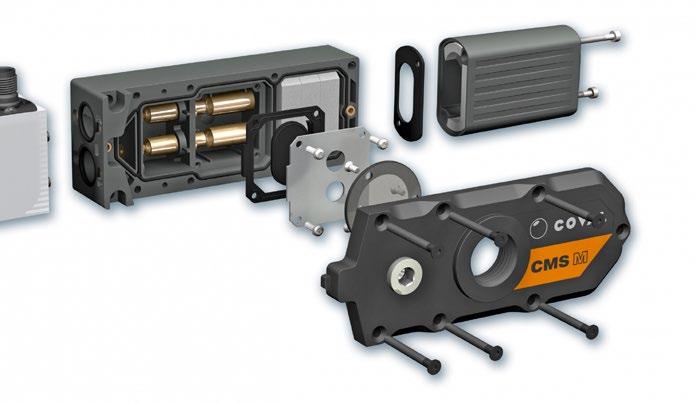
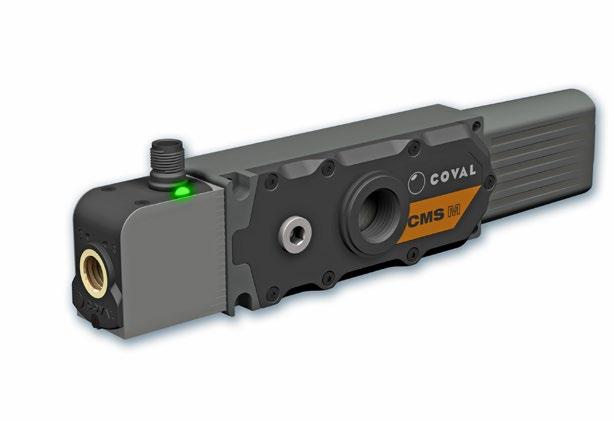

EV charging stations need a broad range of engineered access hardware access panels on charging dispensers and power substations to protect valuable electronics from theft, vandalism, and outdoor weather conditions.
Battery storage systems and electric vehicle charging units are rapidly being woven into the infrastructure of today’s world. eV charging stations are being installed in many locations, including parking lots and garages, and renewable wind and solar power systems are driving the growth of industrial-sized grid battery storage systems to capture excess energy and make it available in off-hours.
eV charging locations with multiple charging dispensers will have a separate substation that connects the chargers to the grid and helps manage power flow. These units contain a significant amount of valuable power electronics and digital control hardware. They are housed and protected with hardened enclosures similar to the ones used by telecommunications and electric utility companies.
These enclosures have multiple access panels for technician servicing and maintenance activities. The combination of public location and valuable electronics creates a critical need to fully secure these systems against theft, vandalism, and the elements.
These enclosures have multiple access panels for technician servicing and maintenance activities. The combination of public location and valuable electronics creates a critical
need to fully secure these systems against theft, vandalism, and the elements. To secure charging enclosures, industrial designers can take advantage of new developments in multi-point, rotary, cam, and draw latches. In addition, a range of modular electronic latching and electronic Access Solutions (eAS) can be used to remotely monitor and manage technician access, further improving the security and protection these vital new industry platforms require.
The security and access requirements for grid storage systems have both similarities and differences when compared with eV charging platforms. Generally speaking, grid storage systems are larger than the e V charging substations — about the size of half a shipping container.
In many cases, these units are grouped together in securely controlled areas, so the risk of theft and vandalism, while present, is not as significant. However, battery enclosures need to be much sturdier and pass stringent fire safety and explosion protection regulations due to the sheer amount of power contained within.
Grid storage enclosures feature multiple access points and panels. They must be hardened against outside weather

conditions, so the access panels need to securely and reliably latch when closed. In addition, some access panels must be quite large to accommodate battery component installation and replacing.
Mechanical compression latches created specifically for outdoor applications provide an effective solution for such enclosures. engineered to seal out dust, water and other contaminants, compression latches are easy to install and operate. To meet this need, some manufacturers offer adjustable compression options that can compensate for variations in access panel thickness and gasket set.
Multipoint latching systems offer these same benefits for larger access panels. A single handle actuates multiple latch points along large doors; so instead of requiring a technician to secure two or three latches before leaving, one actuator secures the whole panel. Multipoint latching systems can be combined with eAS and electronic locks for even more security.
In addition to a secure latching solution, designers need to also consider additional accessories that will enhance the safety, sealing and functionality of their equipment.
For example, finding the right hinge solution is of utmost importance to ensure secure door retention and ergonomic access. Concealed hinge options offer a clean aesthetic,
With the rapid growth of grid battery storage systems, enclosure designers and manufacturers can secure these systems with efficient, ergonomic multipoint latching systems that can incorporate electric rotary latch actuation.

while removable hinges allow for easier maintenance access in restricted spaces with easy removal of the door. Another important consideration in enclosure design is a gasketing solution that provides environmental sealing.
Multiple gasket configuration options provide good compression characteristics, seal out dust/moisture, dampen rattle due to vibration, and compensate for surface contour irregularities.
eV charging dispensers and substations may have one or more access panels to allow fast, safe access to the enclosed equipment for maintenance and upgrades. The high-voltage electrical equipment within these units (particularly the substations) poses major risks of injury or death to thieves or vandals. To protect against this risk, enclosure designers need to secure access points with latches engineered to prevent break-ins.
new multi-point and rotary latch models offered by major access hardware manufacturers combine flush mounting and smaller dimensions with highly secure latching. They provide a secure and reliable latching option, and rotary latches are designed to be hidden, with no obvious latch point that can attract unwanted attention. Additionally, they provide the right level of compression to keep out rain, ice, and snow. Multi-point latching systems also offer a flush
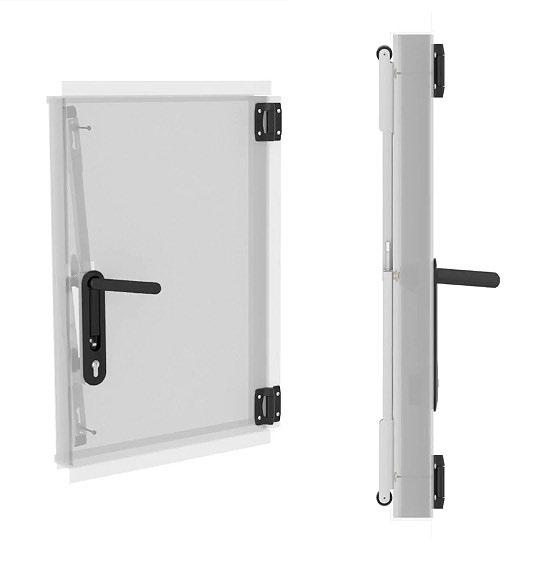
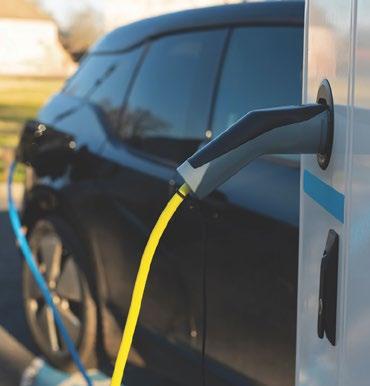
Multi-point latching systems designed especially for gasket-sealed outdoor applications offer a low-profile handle, installation flexibility, and adjustable fit for an attractive look and reliable performance.
option with a high strength compression force for outdoor applications.
electronic locks are frequently used in publicly accessible telecommunications and electric utility enclosures, systems similar to energy storage systems. These locks replace mechanical keys with numeric code entry panels, electronic key fobs, and proximity sensors that automatically lock or unlock an access panel when an authorized technician approaches.
electronic Access Solutions (eAS) platforms provide the most reliable way to secure these enclosures. Most eAS systems have three components: an access control or input device (typically a Bluetooth reader), an electromechanical lock, and a management system that monitors and controls virtual access keys.
Technicians who need to open the eV substation will have a smartphone app and use it to supply a virtual credential to unlock the panel and service the equipment. All these activities — providing the specific digital key and tracking its use — can be monitored and managed remotely via cloudbased platforms.
By: James Stroud - Manager of Product Development Southco www.southco.com
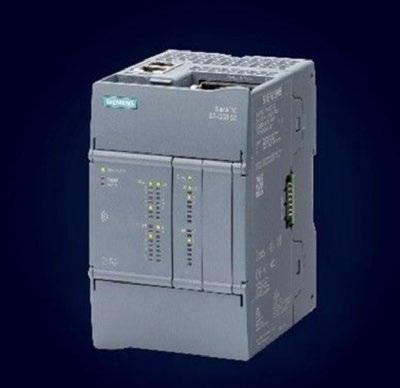
The Simatic S7-1200 G2 controllers are part of the Simatic controller family.
For the first time in ten years, Siemens is announcing a new generation of controllers, available in winter of 2024, at Hannover Messe 2024. With this new generation of controllers, Siemens is expanding its offerings and demonstrating how these latest innovations will make automation and programming easier for customers.
The new controllers help bridge the worlds of operational technology (OT) and information technology (IT). The controllers’ high communication performance and efficient data processing increase production output. By connecting the controllers to IT systems, it is also possible to use advanced data analysis, for example in the cloud.
The new controllers are part of Siemens Xcelerator, allowing customers to benefit from the standardized engineering approach in the TIA Portal. The Simatic S7-1200 G2 controller generation enables customers to address major challenges, such as productivity, flexibility, and cost optimization.
At the trade show, customers can explore the Simatic S71200 G2 controller via digital and real exhibit highlights: the S7-1200 G2 – enabling them to experience first-hand how the Simatic S7-1200 G2 supports efficient motion control and flexible machine safety, along with other smart solutions.
New features for Simatic S7-1200 G2
Machine builders are facing rising customer demands for more customized and flexible solutions. This is driving the need for technological advances, such as new motion control functionalities, performance improvements, and machine safety solutions. Siemens delivers full scalability across all Simatic controllers and offers the right controller for every customer application.
Simatic S7-1200 G2 controllers are setting new performance standards for versatile and high-precision automation applications. The new range of controllers combines integrated motion control functionalities with space-saving and flexible machine safety solutions.
For example, the S7-1200 G2 controllers make it possible for machine builders to control multiple coordinated axes and simple kinematics. Customers experience increased performance capabilities thanks to improved processing power, dedicated communication performance and more memory, as well as n ear Field Communication ( n FC) functionality with in-app access to diagnostic, operational, and device data. Plain text diagnostic information about the entire programmable logic controller (PLC) station reduces machine downtime and gives users quick access to data.
Further information on Simatic S7-1200
www.siemens.com
ASCO Series 148/149 provides safety shutoff service in less than one second for industrial fuel burners, even under extreme conditions.
emerson has introduced the new ASCO™ Series 148/149 safety valve and motorized actuator designed for industrial fuel oil burner recirculation and safety shutoff applications. The new solution provides a reliable, versatile tool for industrial users to prevent overpressure, leaks, and system malfunctions that can lead to health and safety incidents, with one configuration suited to a wide range of combustion system applications.
The valve and actuator are designed to be used together in one system for fuel oil recirculation as a safety shutoff. The combination is a compact two- and three-way system with a motorized actuator that achieves rapid, reliable fuel line shutoff from an open to closed position in less than one second.
The system features a high-flow and high-pressure design that enhances heat output and meets approvals from uL (underwriter Laboratories), FM (Factory Mutual) and CSA (Canadian Standards Association) certifications, improving fuel oil combustion system performance through higher pressure and media temperature tolerance. It is engineered for robust and reliable operation in harsh outside environments, supporting an operating range from -40 degrees to 150 degrees Fahrenheit (-40 degrees to 66 degrees Celsius). The valve’s high-pressure design makes it a versatile option for use across multiple fuel oil burner applications.
“The ASCO Series 148/149 valve and actuator combination includes features that align with industry best practices such as redundancy, leak testing ports and overpressure protection,” said Ali Sarwar, global director of marketing, discrete automation, emerson. “Safety being the highest priority, our new design strengthens the reliability of a critical piece of equipment found in burners and combustion systems throughout the manufacturing industry.”
For more information, https://www.emerson.com/en-us/catalog/asco-148-149 www.emerson.com
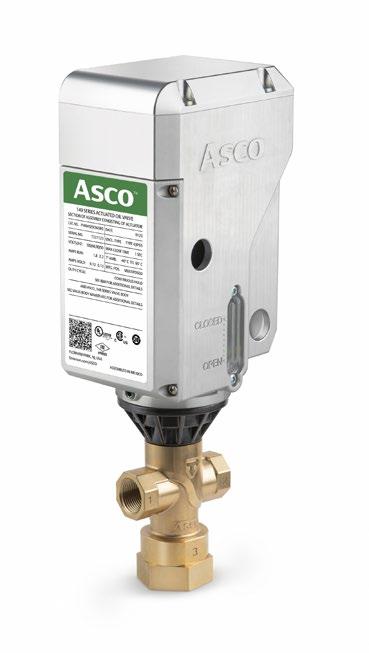
Emerson ASCO Series 148/149 motorized actuator and shutoff valve solution ensures rapid safety shutoff in industrial fuel burners, enhancing safety and reliability in combustion systems, even under extreme conditions.

DFI has announced the MicroATX motherboards to support Intel® Core™ 12th, 13th, and 14th (Alder Lake-S, Raptor Lake-S and Raptor Lake-S Refresh) Gen Processors.
“ With support for the latest Intel Core processors and features including dual GPu slots and dual 10Gbe ports, RPS310 and ADS310 represent a significant leap forward in innovation for industrial and medical computing, empowering manufacturing and healthcare professionals to achieve new levels of efficiency,” said Jarry Chang, General Manager of Products Center at DFI.
RPS310
Featuring dual PCIe x16 Gen4 GPu slots, addresses key challenges for Factory Automation professionals working in Smart manufacturing field, enabling improved visualized data, complex imagery processing and quality monitoring in automated production lines. RPS310 is also perfect for medical professionals to analyze Medical imaging data with unprecedented image quality and efficiency, improving diagnosis accuracy on MRIs and CT Scanners and X-rays.
ADS310
In medical settings, the dual 10Gbe ports of the ADS310 offer lightning-fast network connectivity and accelerated data transfer speeds, providing crucial advantages to healthcare professionals. These ports enable quick access to large medical imaging files and improved transfer
speeds between PACS servers, accelerating diagnosis and treatment processes. Similarly, in factory automation, they ensure rapid data transfer between machines, enhancing monitoring and response capabilities.
Highlighted Features
RPS310
• 12th, 13th and 14th Gen Intel® Core™ with Intel® R680e/ Q670e chipset
• Dual PCIe x16 Gen4 GPu Slots
• Built-in Out-Of-Band (OOB) Remote Management
• Rich I/O and expansion
• 125W TDP
• Compliance & Certification: Ce, FCC, Class B, RoHS
ADS310
• 12th, 13th and 14th Gen Intel® Core™ with Intel® R680e/ Q670e chipset
• Dual 10Gbe Ports
• Rich I/O and expansion
• 125W TDP
• Compliance & Certification: Ce, FCC, Class B, RoHS.
www.dfi.com
Energy solutions company, Aggreko has unveiled a comprehensive range of Stage V multiengine generators to provide flexible, reliable, clean and efficient power to sectors with demanding and varying power requirements.
Designed and manufactured by the company, the new POW e RMX™ range delivers modular power in one containerised solution that can rapidly be scaled up or down depending on the power requirement. The new range includes the POWeRMX3™, the first ever three-engine, 1.35MVA generator housed in a single ISO 20ft container alongside the company’s latest dual-engine 1.25MVA POWeRMX2™ Stage V generator.
The launch comes as energy intensive industries – such as manufacturing, utilities, data centres and construction – face the challenge of balancing energy resilience while reducing emissions in line with net zero targets. Aggreko has introduced POWeRMX™ solutions into its european fleet for customers requiring a power package to provide additional capacity, enhance resilience, overcome power capacity constraints and grid limitations.
The POW e RMX™ generators operate with a load-ondemand system, adjusting seamlessly and autonomously to varying power needs. Their advanced control features and multi engine design means the system can efficiently generate power throughout the load range up to 1.35MVA. The intelligent Stage V solution ensures adaptable power delivery precisely when needed, in addition to optimising fuel efficiency, improving resilience and minimising emissions by generating only the required amount of power.
Oversizing generator sets is a common occurrence across many applications, which risks inefficiencies and potential equipment issues when running at low loads for prolonged periods. using its completely automated system can activate engines as necessary, the efficient, flexible power output that the POWeRMX™ range can, even at low loads, mitigates these issues, further enhancing efficiency and reliability. The advanced control system also allows the engines to meet load-sharing, base-loading, peak lopping or standby requirements.
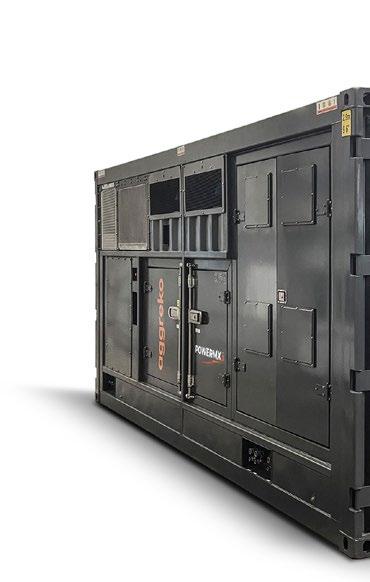
Meeting strict emissions regulations across europe, the new Stage V Certified generator is approved for diesel, Hydrotreated Vegetable Oil (HVO), Gas to Liquid (GTL) and B10 fuels, providing fuel flexible options that support CO2 reducing strategies.
When using multiple POWeRMX units, flexibility of power output is further enhanced, allowing sites with high power demand to be able to access a Stage V certified solution. As organisations look to adopt decentralised energy approaches to improve resilience on their sites as the reliability of grid supply continues to be questioned, having this flexibility of power output with lower emissions will be key to mitigate potential disruption.

As part of the company’s commitment to providing the correctly sized and efficient technology, the new POWeRMX range joins the portfolio of Greener upgrades® solutions. This includes battery energy storage solutions (BeSS), oilfree air compressors, steam boilers, Stage V generators and chillers. Supporting customers’ renewable energy transitions with access to these new cleaner technologies is a key part of Aggreko’s sustainability framework, energising Change™.
David McDonald, Head of Power Generation Products at Aggreko, said: “Delivering best-in-class efficiency, reducing emissions, whilst building energy resilience are key priorities for all industries. Harnessing the full capabilities of the first of its kind POWeRMX3, in addition to the POWeRMX2, we
can support our customers with their sustainability goals without compromise.”
“The need to adhere to even more stringent emission regulations is often a priority, particularly for large, multi MW projects. This results in an increased requirement for Stage V solutions that are also compatible with greener fuels. With the new POWeRMX range, energy intensive sectors will benefit from this type of revolutionary multi engine solution that delivers lower emissions while affording flexible power provision and security of supply.
“Coupled with the existing fleet stage V generators, battery energy storage systems (BeSS), oil free air compressors, coil steam boilers and extended portfolio of greener upgrades products, the POWeRMX range will provide even more choice to our customers across all sectors.”
www.aggreko.com

German leader manufacturer of chocolate decorations and ingredients, Ulmer Schokoladen, and global industrial wireless automation technology provider CoreTigo, announce today their cooperation in enhancing the efficiency of chocolate manufacturing operations.
Looking for a way to upscale its production lines, ulmer Schokoladen turned to CoreTigo, to utilize its IO-Link Wireless solution for automation of chocolate manufacturing processes. ulmer’s flexible production lines use mobile machines for sealing cartons with finished goods. Moving these machines from one location to another within the manufacturing facility creates complexity, which includes rewiring them for communication with the main control unit in each location.
CoreTigo’s industrial wireless automation solutions enable a quick, simple, and scalable retrofit on ulmer’s existing machines. By connecting an IO-Link optical proximity sensor on each machine to CoreTigo’s IO-Link Wireless Bridge, the TigoBridge, it enabled wireless real-time communication of product carton counts to the TigoMaster IO-Link Wireless Master unit, and from there to the PLC via PROFIne T for data processing. This enabled full wireless automation of the process, implemented on several machines, located in different halls. The solution eliminated ulmer’s dependency on manual counting as well as the complex communication wiring and machine relocations.
Additionally, ulmer intelligently utilized CoreTigo’s IOLink Wireless connectivity to wirelessly connect PLCs on the production line. This is done by connecting an IO-Link Wireless Hub (TigoHub) to collect the digital outputs from the secondary PLCs and pass the data back wirelessly to a TigoMaster unit, connected to the main PLC and the factory’s MeS system.
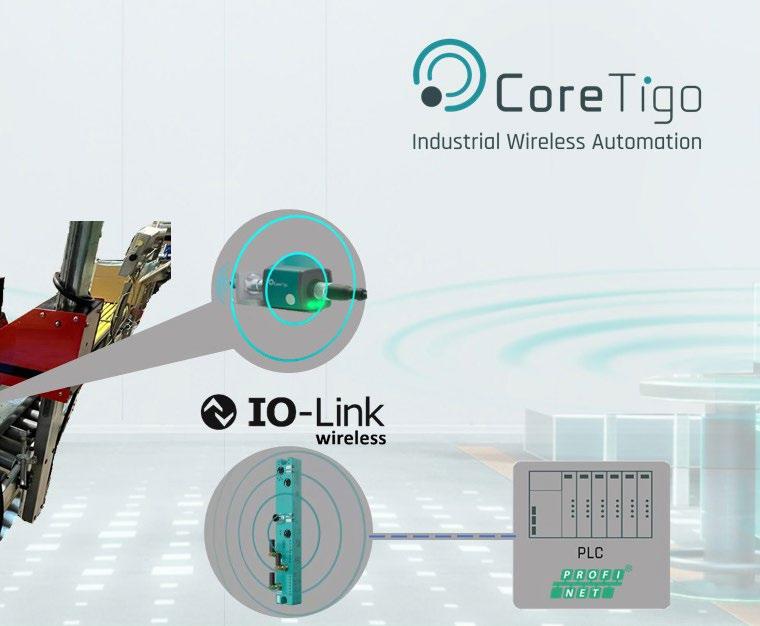
By going wireless Ulmer gained several benefits, including:
• Flexibility and agility: With the elimination of the cables between the PLC and the machine’s sensors, moving the sealing machines to new locations became quicker and easier, saving valuable time and effort.
• easy deployment: As CoreTigo’s IO-Link Wireless devices offer quick and easy retrofitting of existing machines, switching to wireless required a very low effort and minimal downtime until the machine was up and running again.
• Reliability: Being an industrial-grade wireless communication protocol, IO-Link Wireless allows full and ongoing connectivity, even when there is no line of sight between the IO-Link Wireless Bridge and Master, thus contributing to the seamless operation of the machine.
“Integrating CoreTigo’s industrial-grade wireless connectivity enabled us to increase productivity and agility of ulmer Schokoladen’s production lines by enabling us a new level of flexibility”, said Justus ulmer, ulmer Schokoladen CeO, “This enables us to continue offering our customers the best quality products, even in high-pace production.”
Read more about ulmer Schokoladen Learn about CoreTigo’s IO-Link Wireless solutions
www.coretigo.com
The ESK-IMO pumps offer the advantage of easy maintenance without the need for tank draining and reclamation.
Vanzetti engineering is expanding its product portfolio by introducing a new family of submerged pumps, the eSK-IMO retractable series with flow rates from 70 m3/hr up to 500 m3/hr and a head of up to 240m. As the entire hydraulic and mechanical part derives from the ARTIKA Series, the eSK-IMO pump inherits the reliability and quality of a product that is already acknowledged and wellestablished in the market.
The eSK-IMO Series is used in the industrial field in Smallscale terminals with a capacity of <1 MTPA, million tonnes per year and in the marine field where the retractable pumps are used as emergency pumps or Cargo/Stripping pumps for emptying tanks in the event of malfunction and/ or necessary maintenance on the main pumps.
In contrast to the ARTIKA Series, which is mounted directly at the bottom of the tank or inside a cryostat, the eSK-IMO retractable pump is installed inside a column that is isolated from the rest of the tank by a foot valve. In this way, the liquefied natural gas remains confined in the tank outside the column, allowing the pump to be removed by opening a cover at the top of the column.
Vanzetti engineering offers the new retractable submerged pump series with all the accessories required for its operation: the foot valve, the column cover, the cables required to lift the pump and remove it from the tank, and the electrical connectors. As an optional extra, a vibration monitoring system is also available to display and signal any malfunction alarms.
A special feature of the eSK-IMO retractable pump is that it does not require the tank to be emptied for maintenance. This is an important added value considering that the tanks of Small Scale LnG Terminals are subject to very long maintenance intervals (over twenty-five years). As the maintenance interval of the pump is generally shorter than that of the tank, it is a huge advantage to be able to remove the pump and carry out maintenance without taking the tank out of service because it makes the process quicker and easier for both the user and the terminal itself. In addition, all potential related risks are thus avoided.
In the marine sector, the eSK-IMO Series allows for greater flexibility in maintenance activities, making it possible to empty atmospheric tanks (operating at a pressure of less than 1 bar) in order to service the tank itself or the installed pumps. Moreover, the eSK-IMO pump does not require a large space above the tank – a feature that is compatible with environments normally found below deck – to be extracted from the column.
The Small Scale LnG Terminal and marine markets are experiencing unprecedented growth, with particular emphasis in the Americas and South east Asia regions. These

segments are emerging as key drivers in the transformation of the global energy and maritime landscape. With increasing demand for alternative energy and growing pressure to reduce emissions, terminals are proving to be a flexible solution that can bring LnG to where it is needed, especially in industrial, commercial, civil and shipping contexts. In parallel, the LnG shipping market is experiencing significant growth. LnG-fuelled ships offer an alternative to traditional fuel, helping to reduce emissions to comply with increasingly stringent regulations, in turn generating growing demand for port infrastructure and dedicated terminals.
This virtuous circle is fuelling rapid and sustained growth in both sectors, with prospects for further expansion in the near future, and the new eSK-IMO Series fits strategically into this context.
www.vanzettiengineering.com
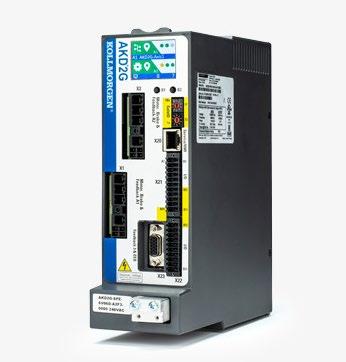
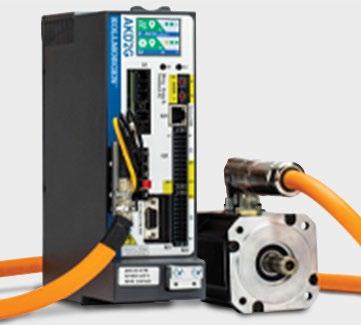
The updated Kollmorgen AKD2G servo drive features new communication protocols that support easier integration with third-party controllers while delivering industry-leading performance.
Kollmorgen, a global leader in motion control systems, today announced the latest update to its AKD2G servo drive. With the introduction of these new features, Kollmorgen has broadened its offerings to additionally support PROFIneT IRT and ethernet/IP with CIP Sync alongside CAnopen®*, etherCAT®*, and FSoe timesynchronized communication protocols. each protocol is rigorously tested with a variety of motion controllers and certified by industry standards organizations.
The AKD2G servo drive update allows for synchronized motion between multiple drives using a wide variety of control architectures. Thanks to its flexibility and high performance, AKD2G is the ideal drive for use in applications that require highly precise coordination across multiple axes of motion.
The drive features industry-leading power density in a compact package and is easy to mount — with one- and two-axis variants available. engineers can leverage singlecable Smart Feedback Device (SFD) or HIPeRFACe®* DSL connections or choose from a wide range of other feedback devices.
Finally, the drive features an optional SafeMotion® Monitor (SMM) firmware with a safety level of SIL3/PLe to meet
functional safety needs and enable a wider range of applications.
“The AKD2G servo drive is an ideal option for automation designers and OeMs that are actively optimizing their designs — offering increased performance, a smaller footprint, and greater design flexibility,” said James Davison, Senior VP/GM at Kollmorgen. “It’s a system designed with our customers in mind to make automation engineering easier, more efficient, and more powerful.”
The AKD2G paired with AKM2G motors is part of the 2G Motion System, a suite of motion products designed to work together for ultimate ease of setup and higher performance. engineers also can take advantage of the drive’s compatibility with a wider range of controllers and feedback devices — or with other motors, as needed.
www.kollmorgen.com